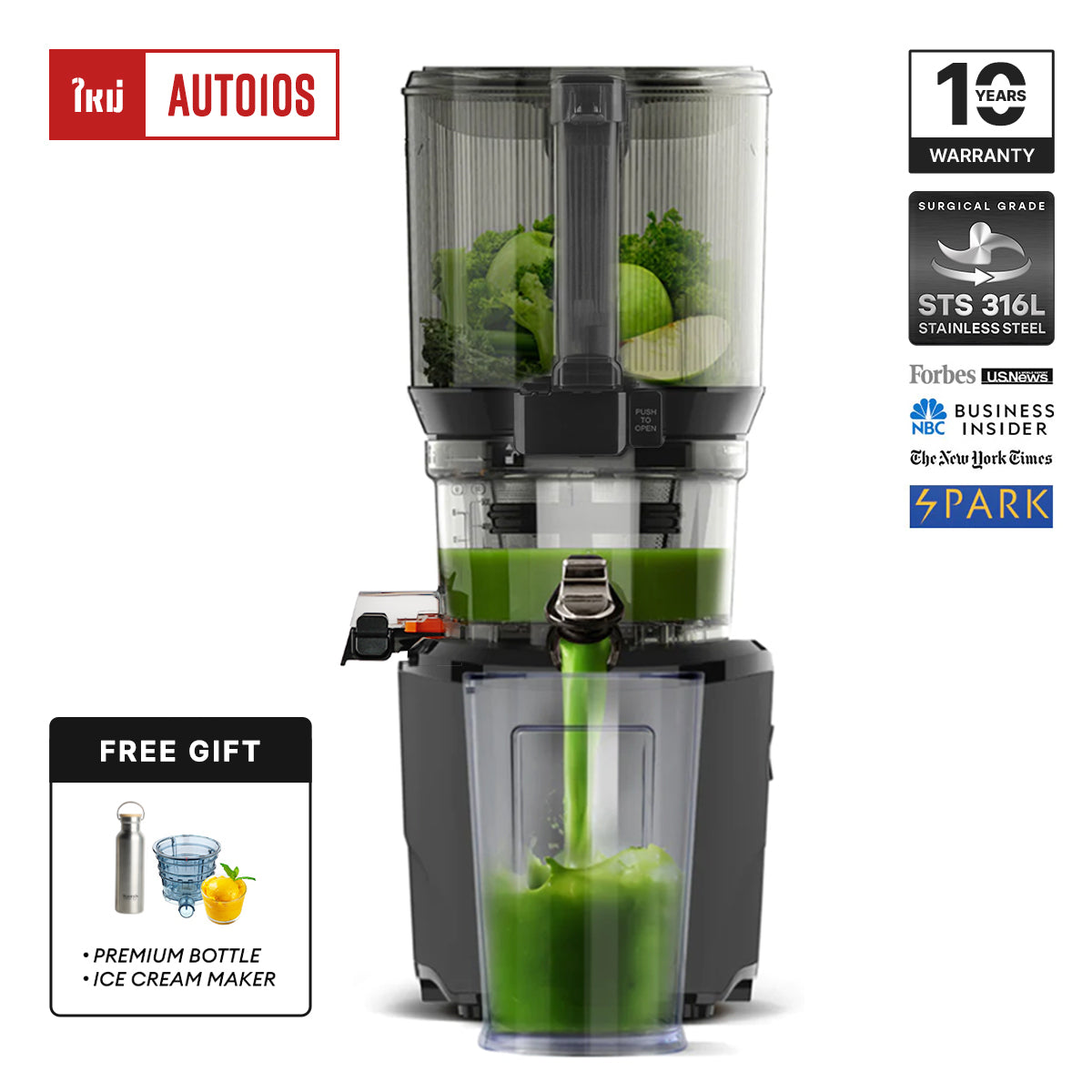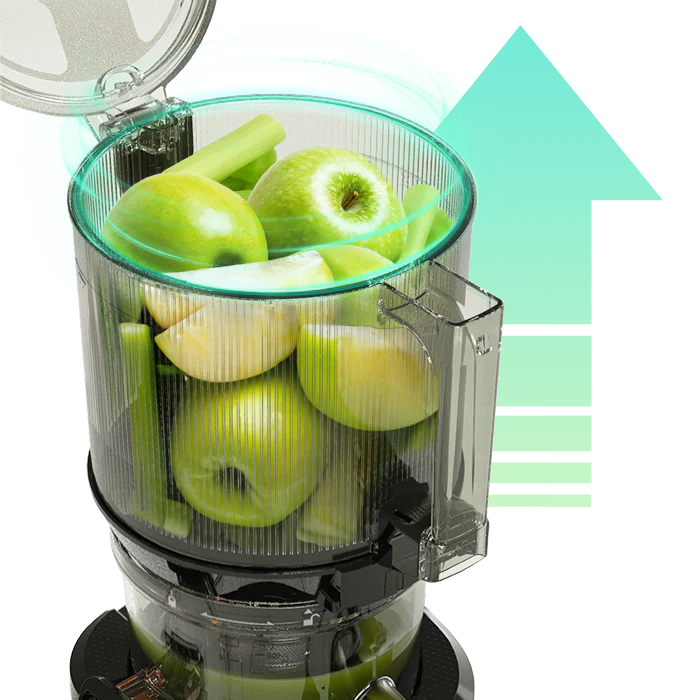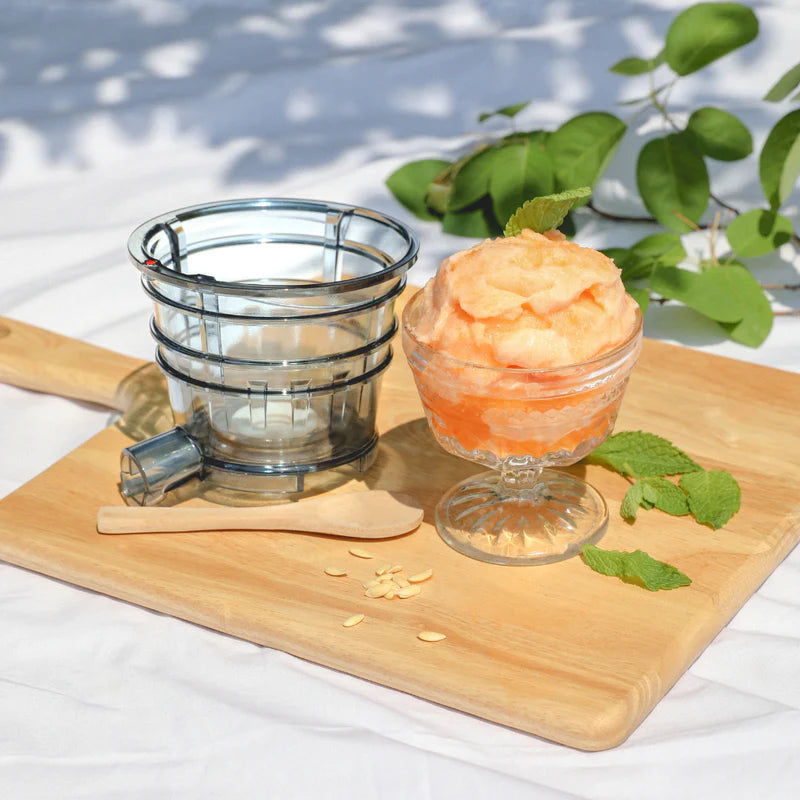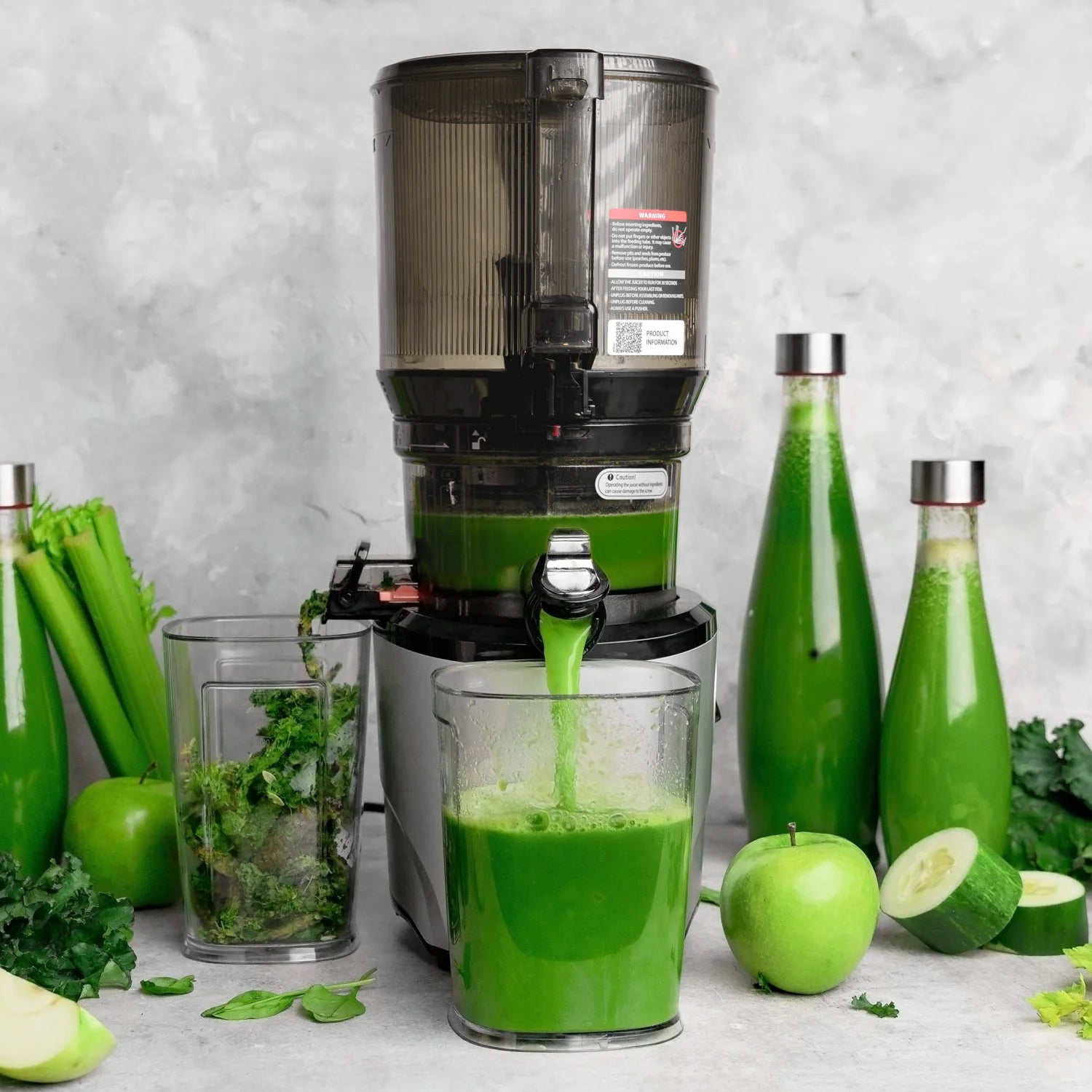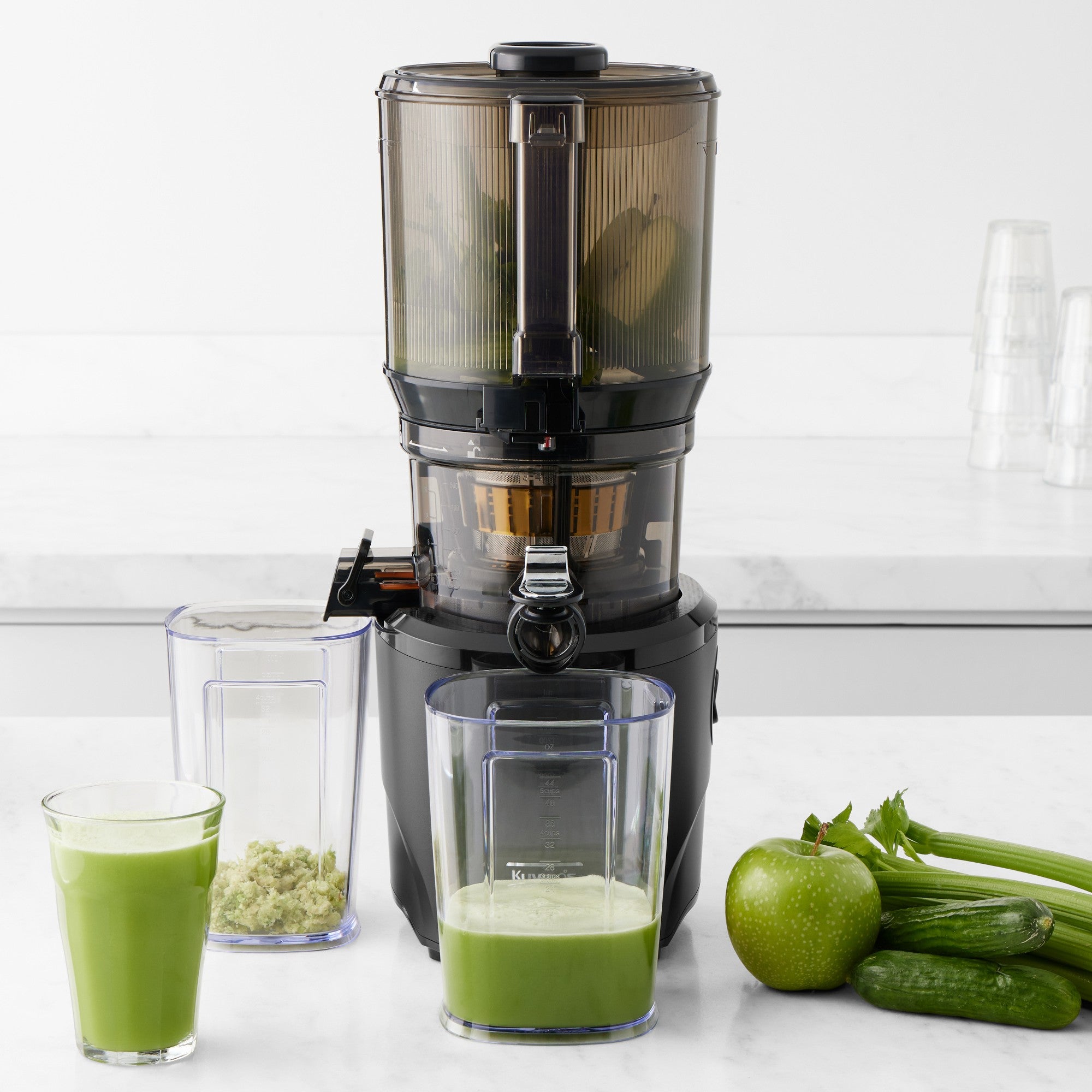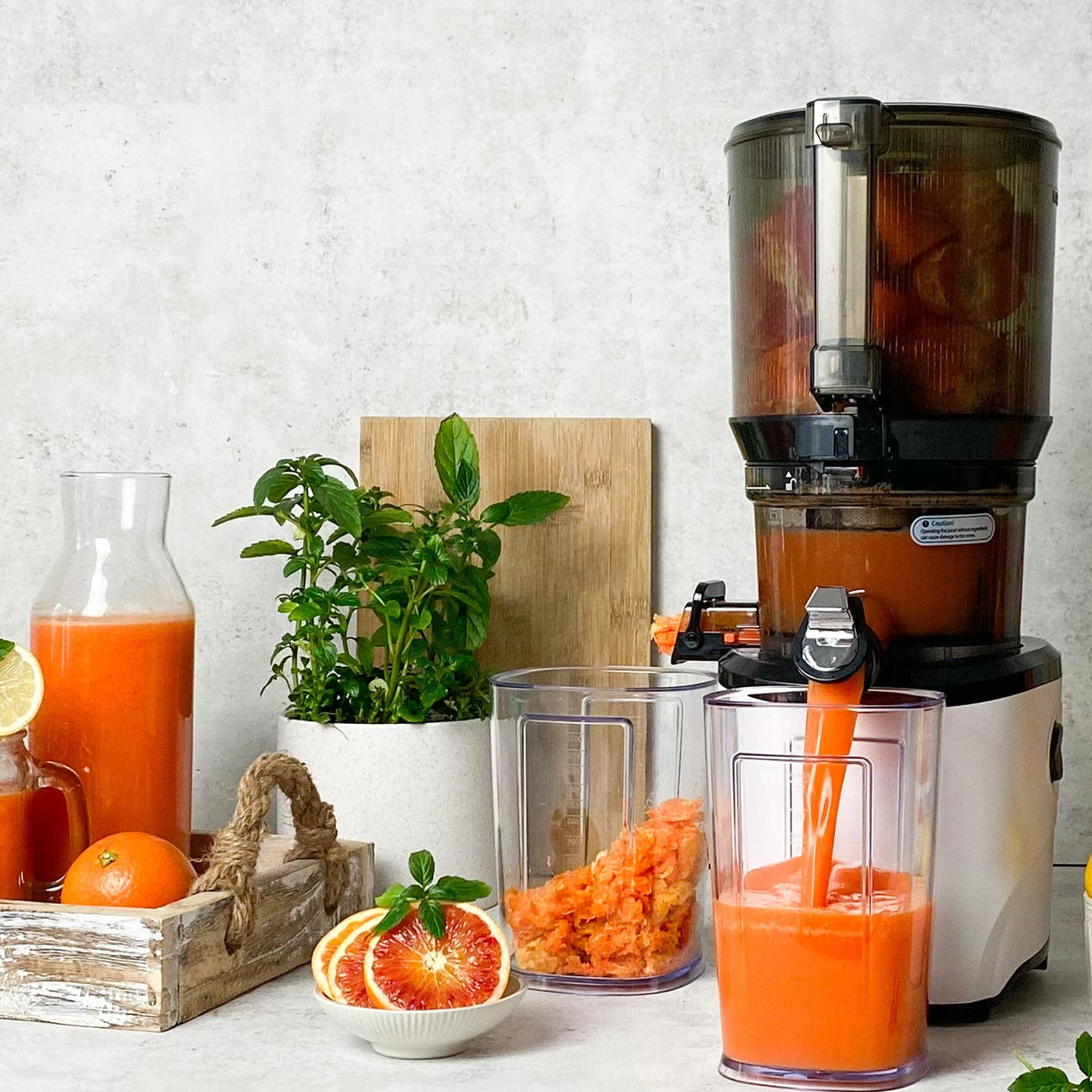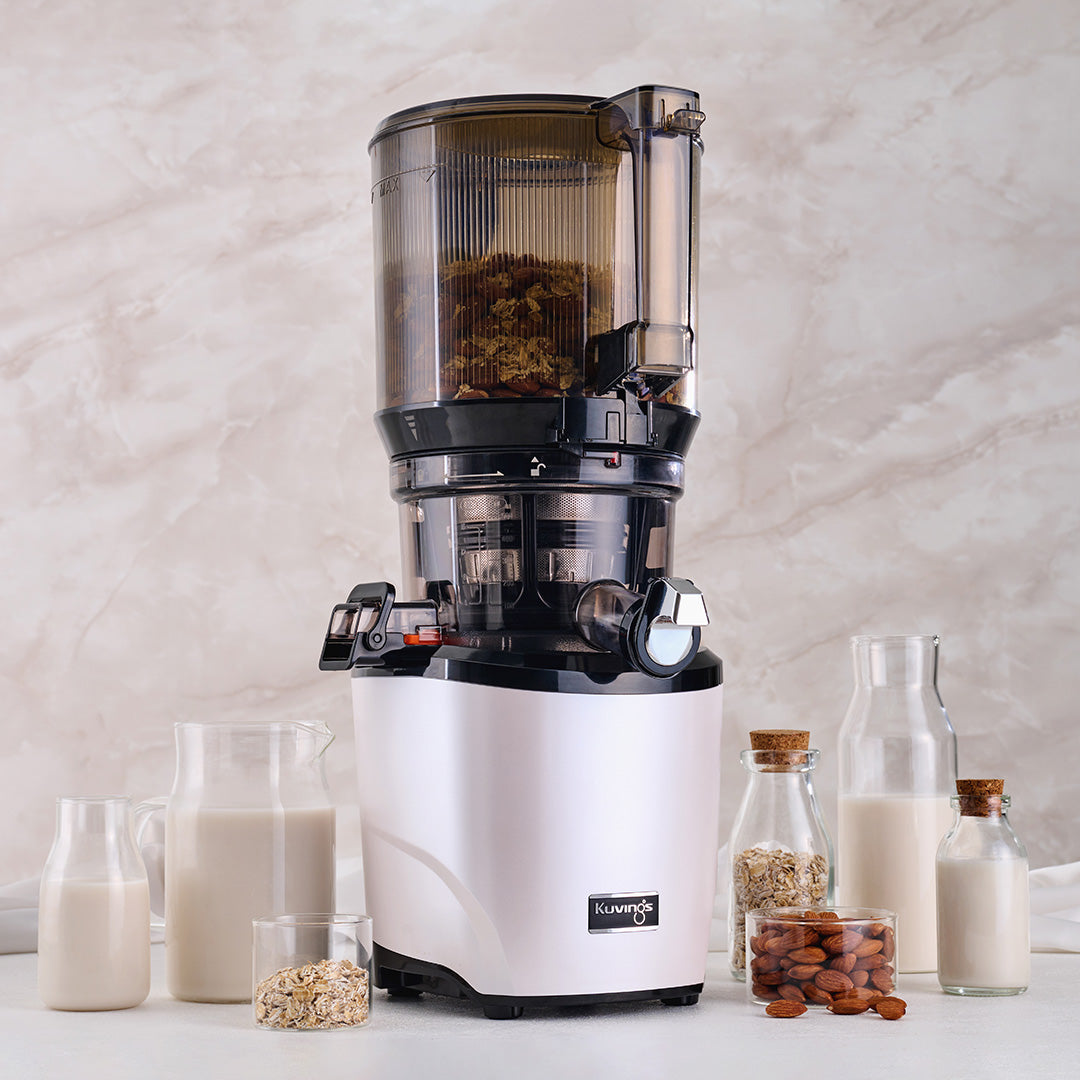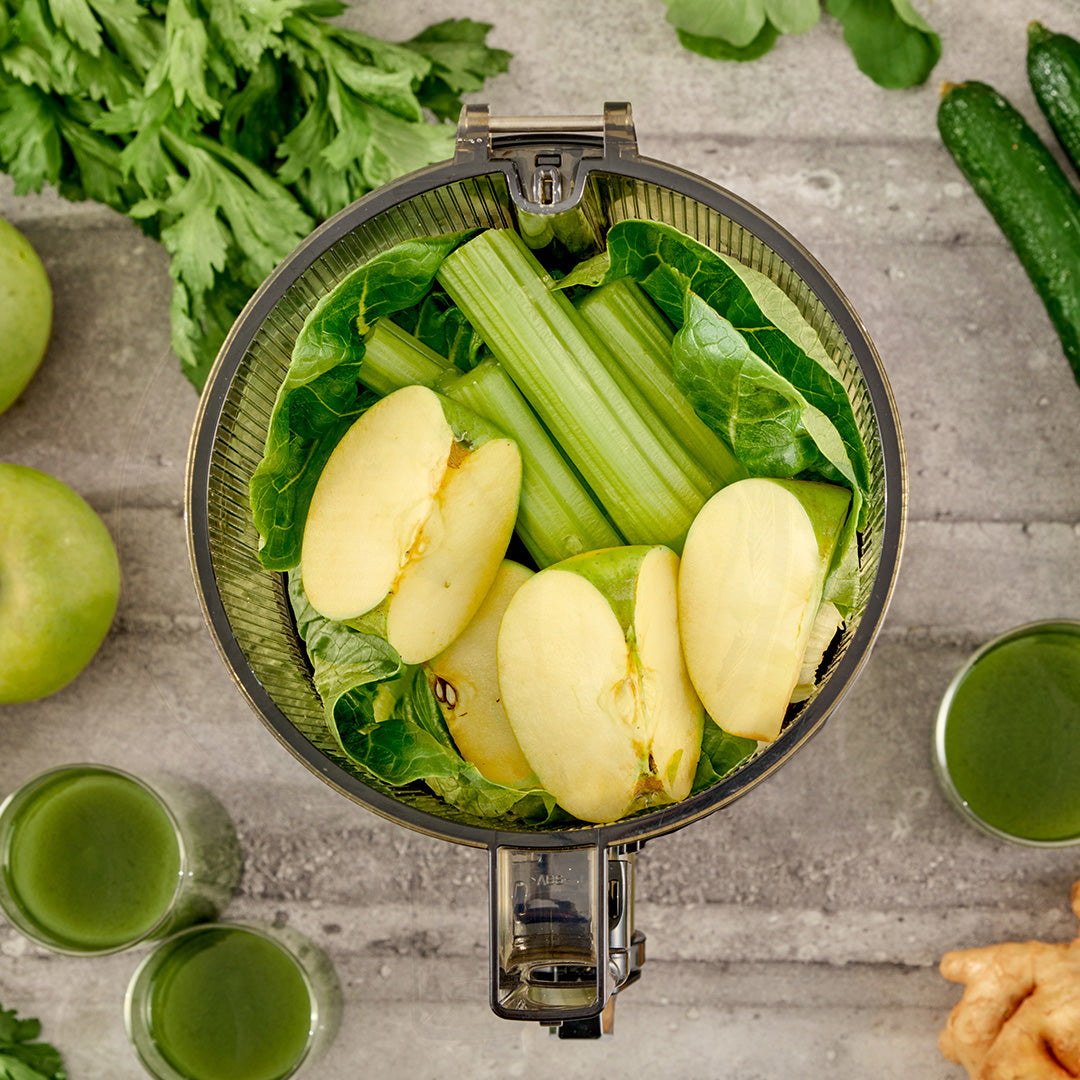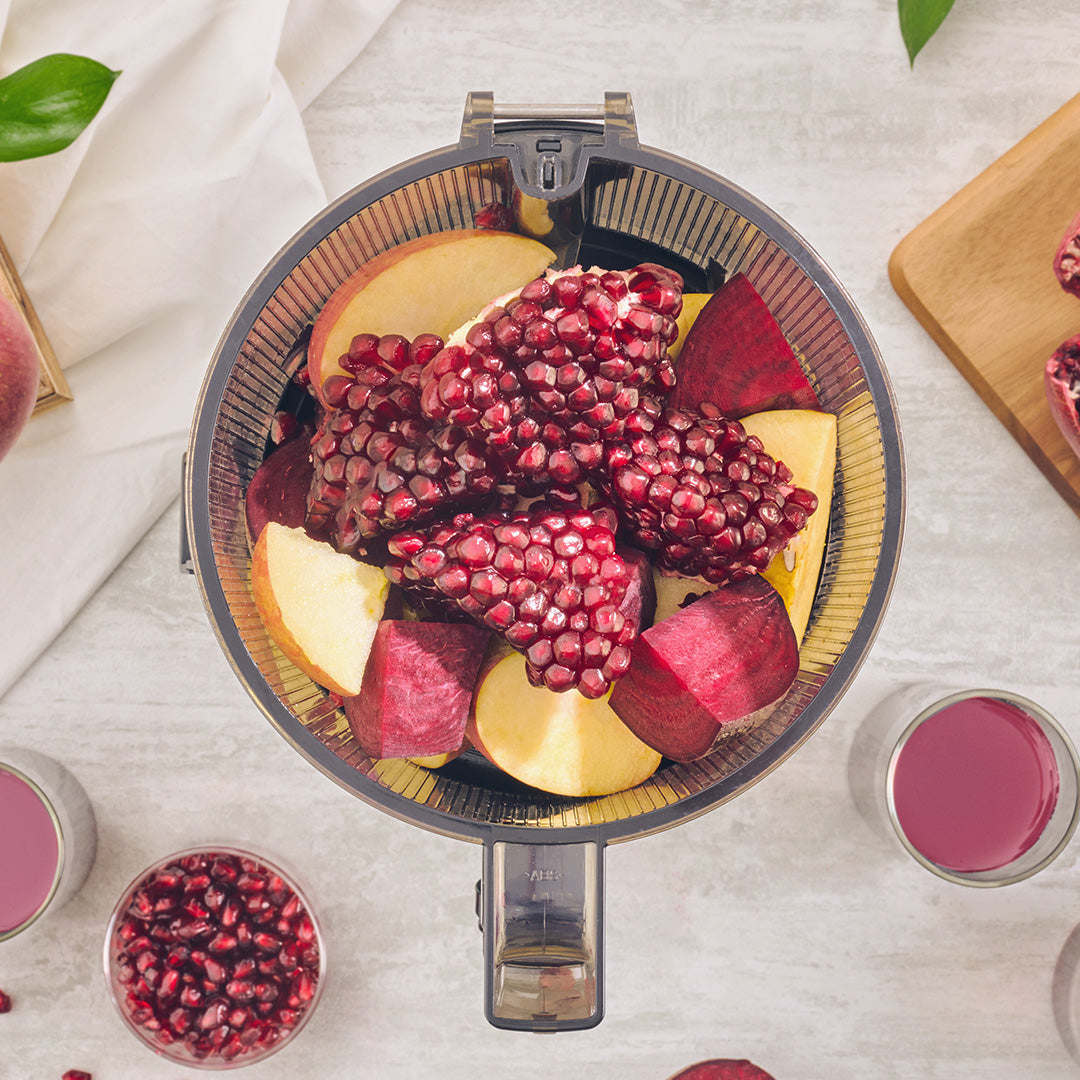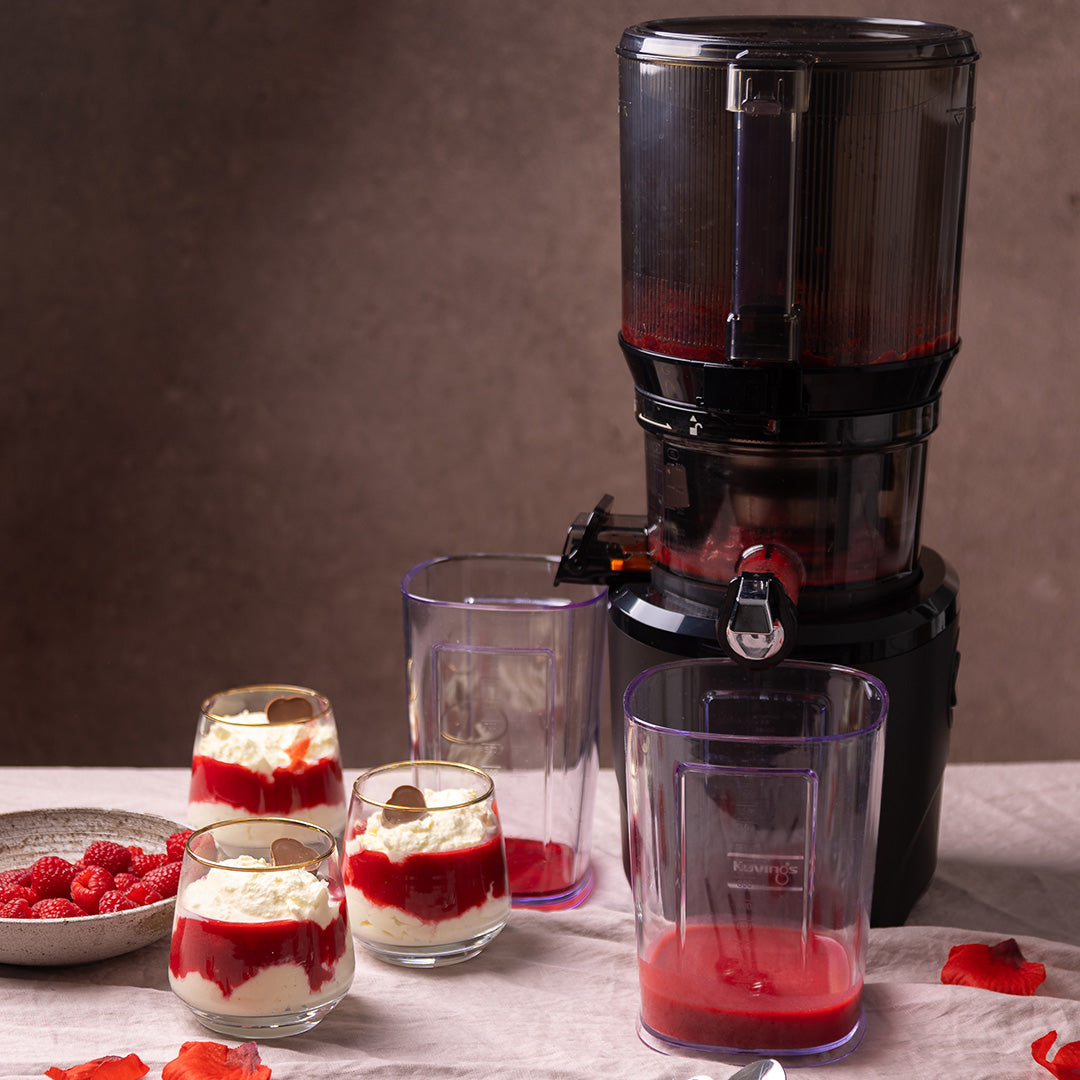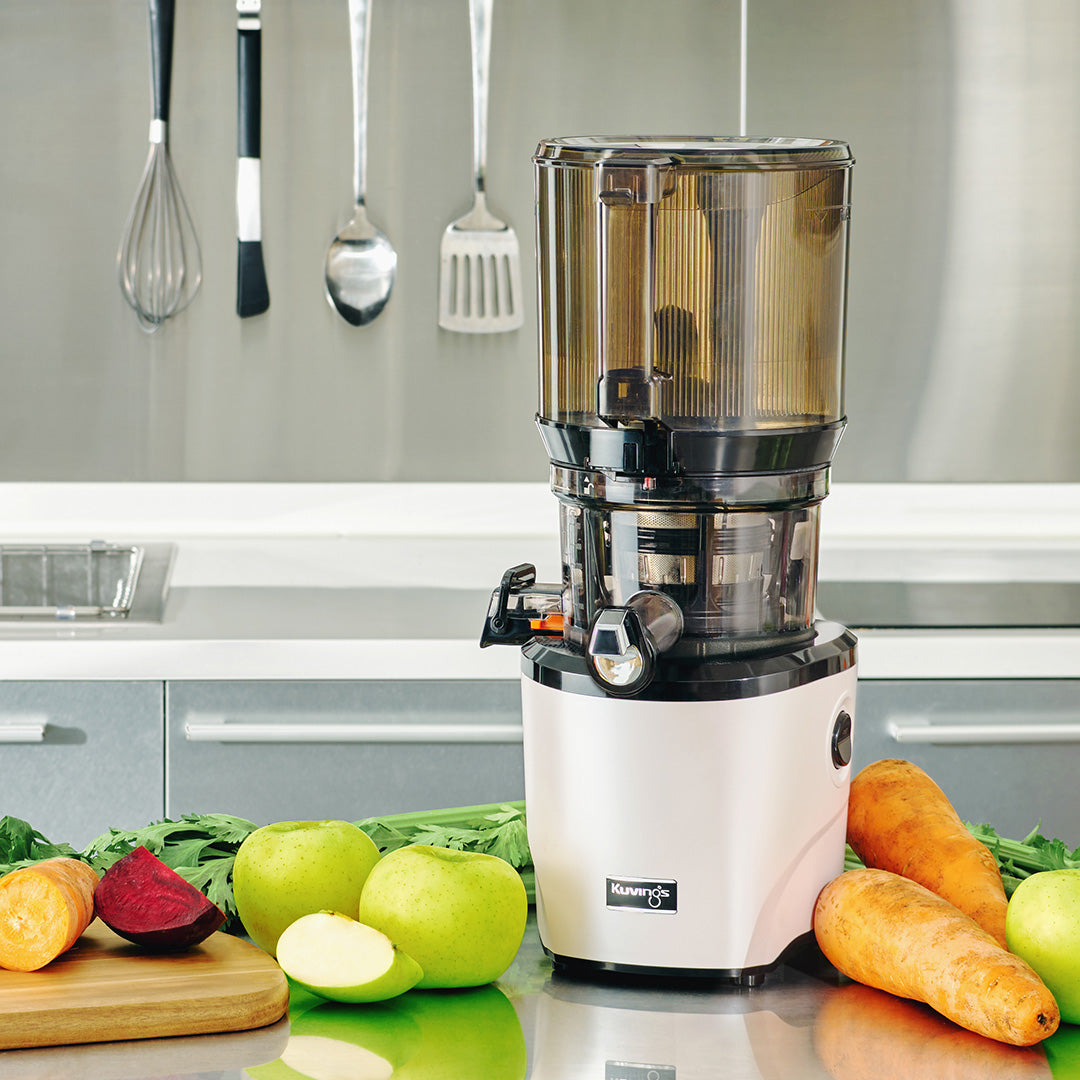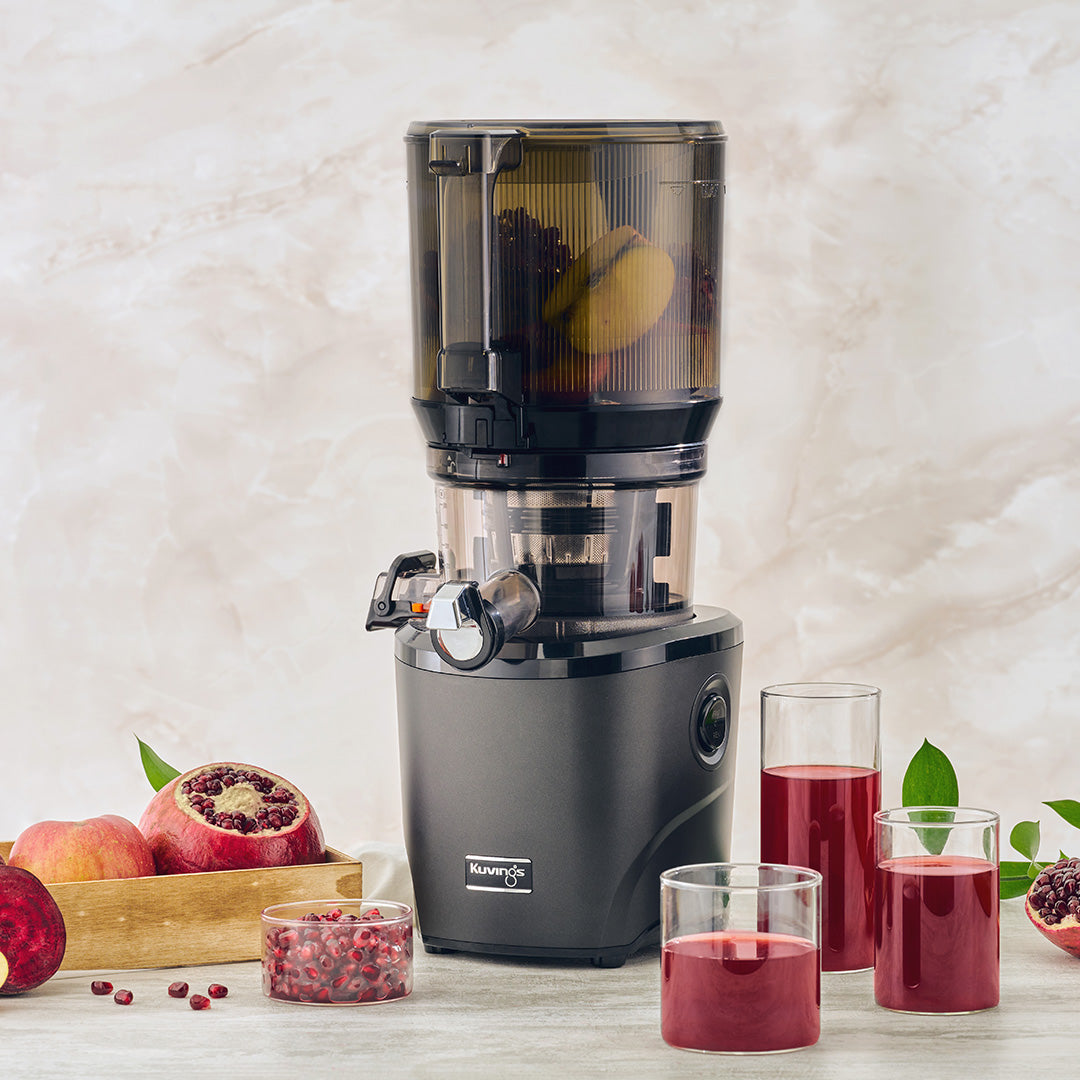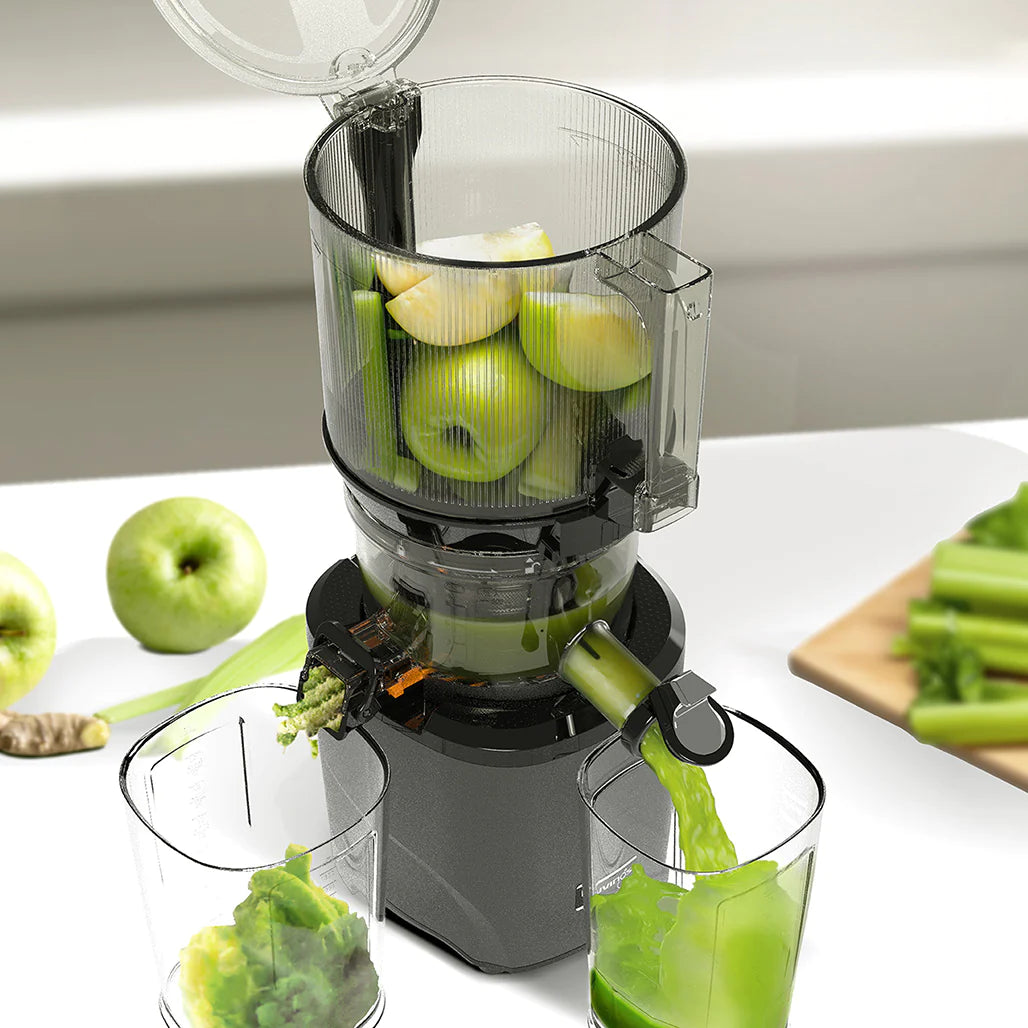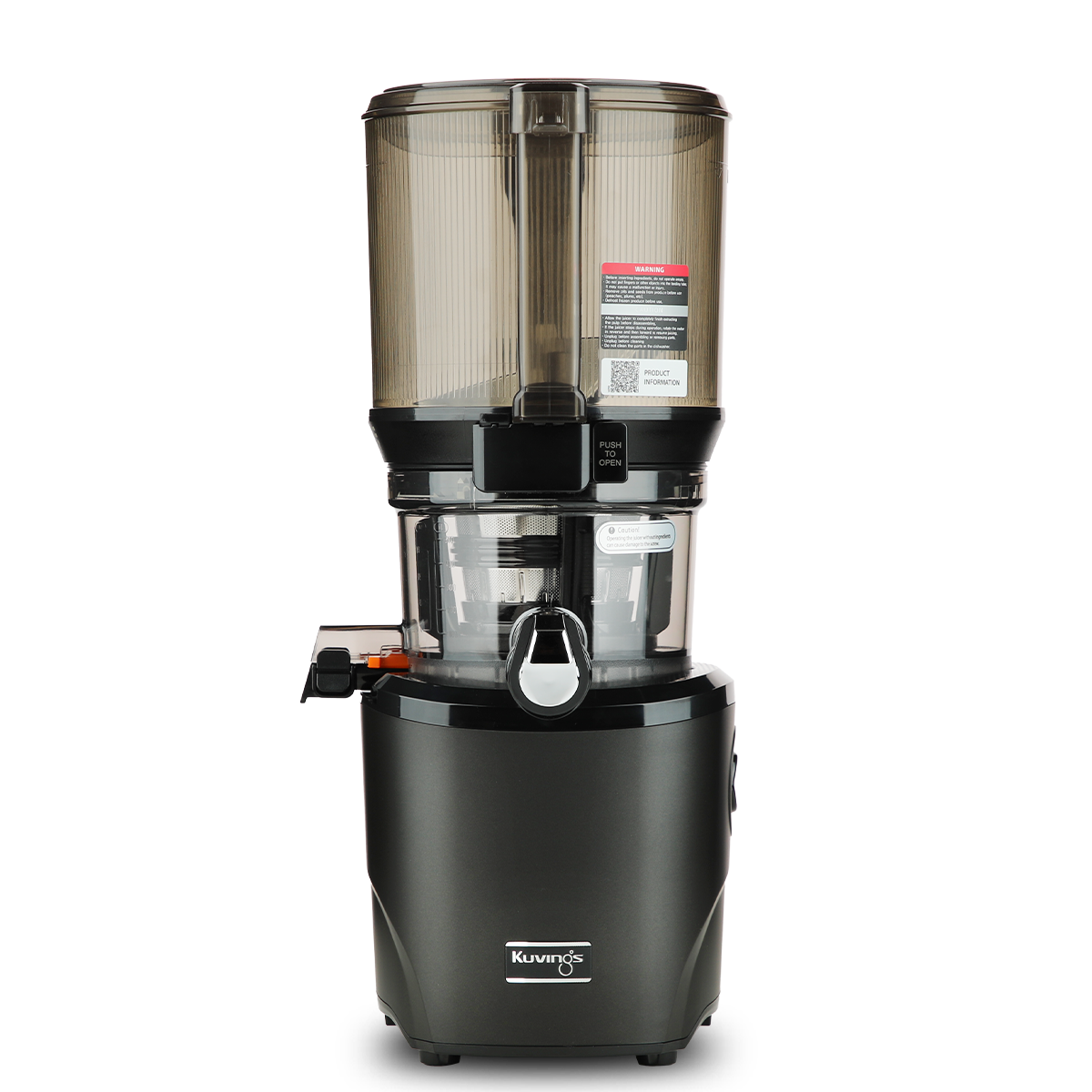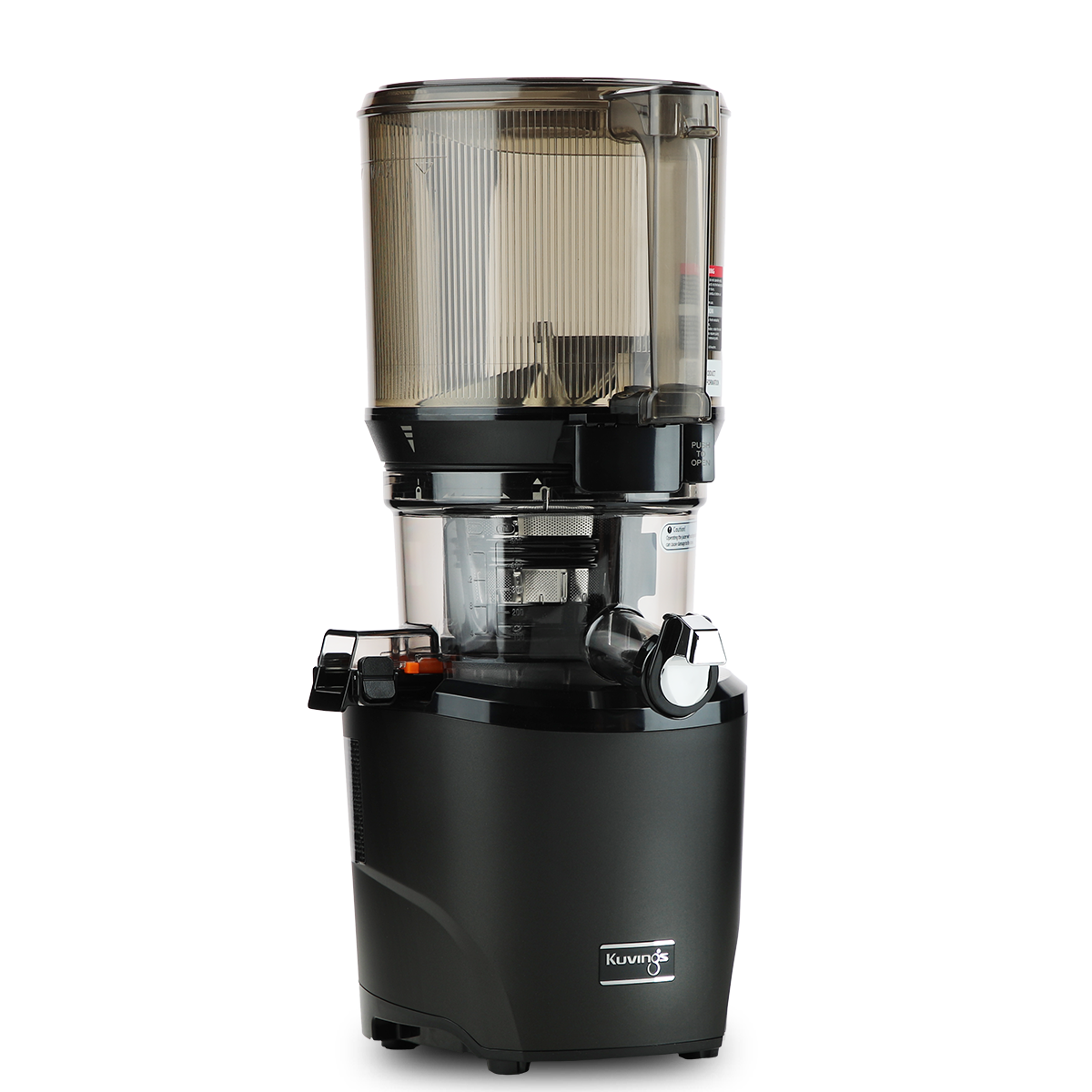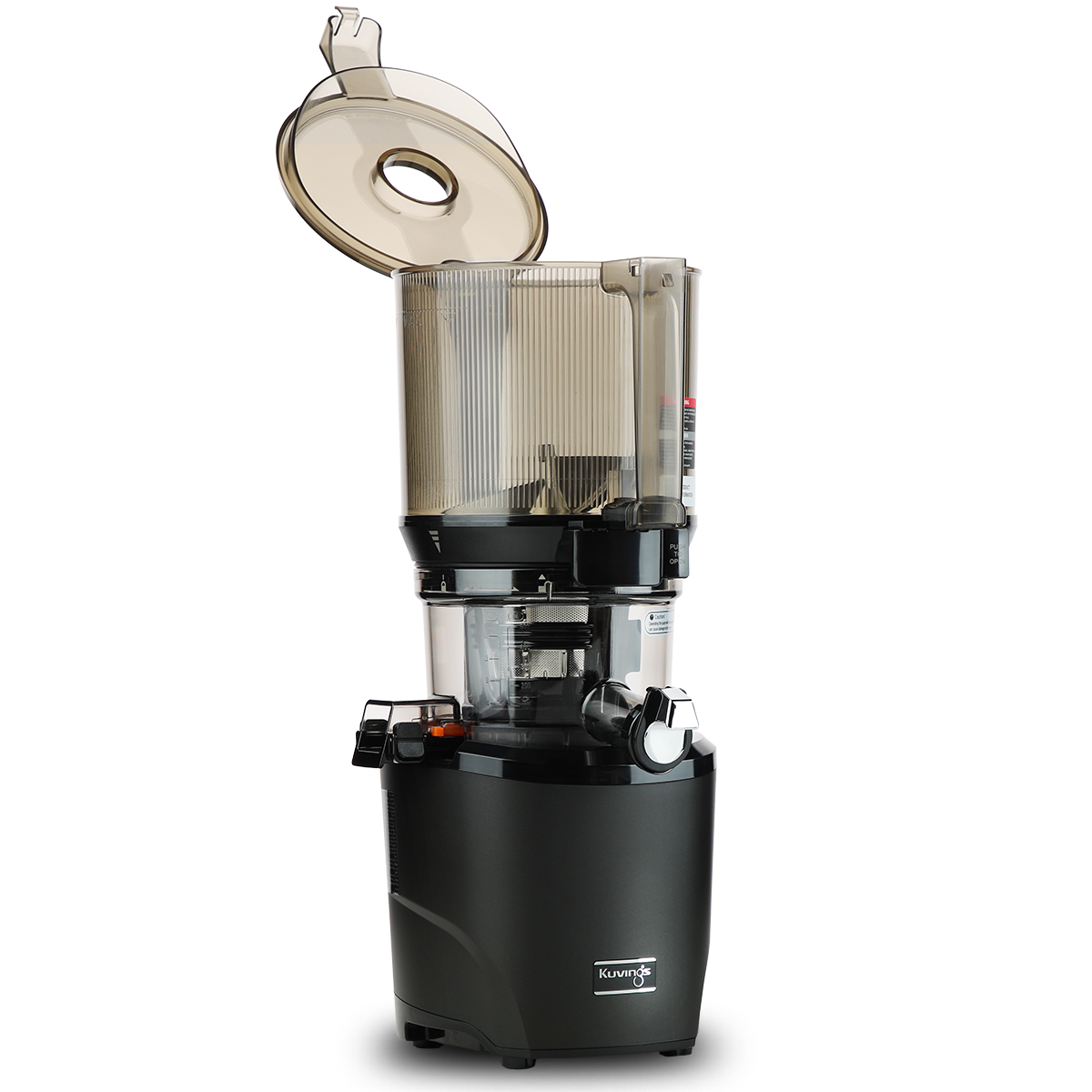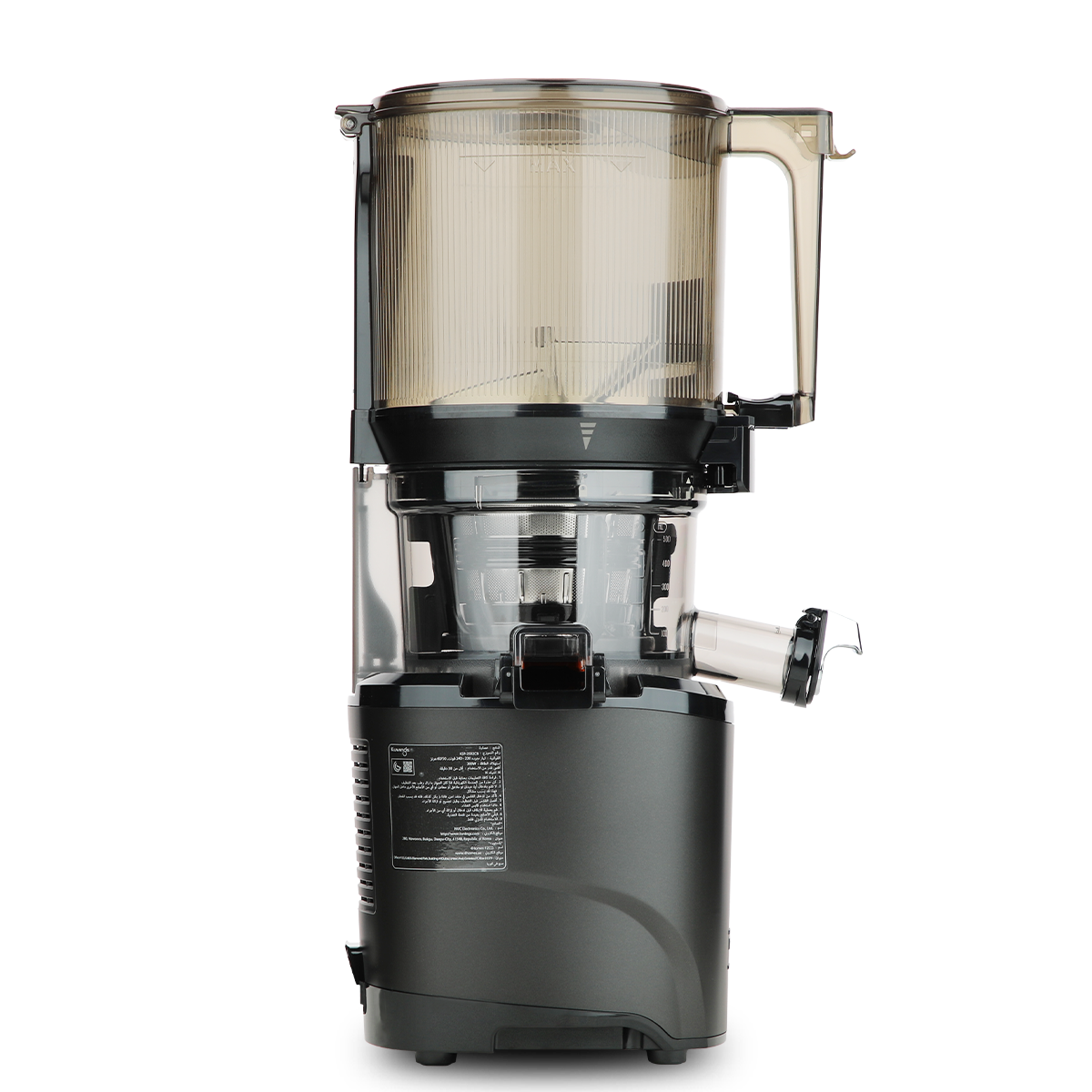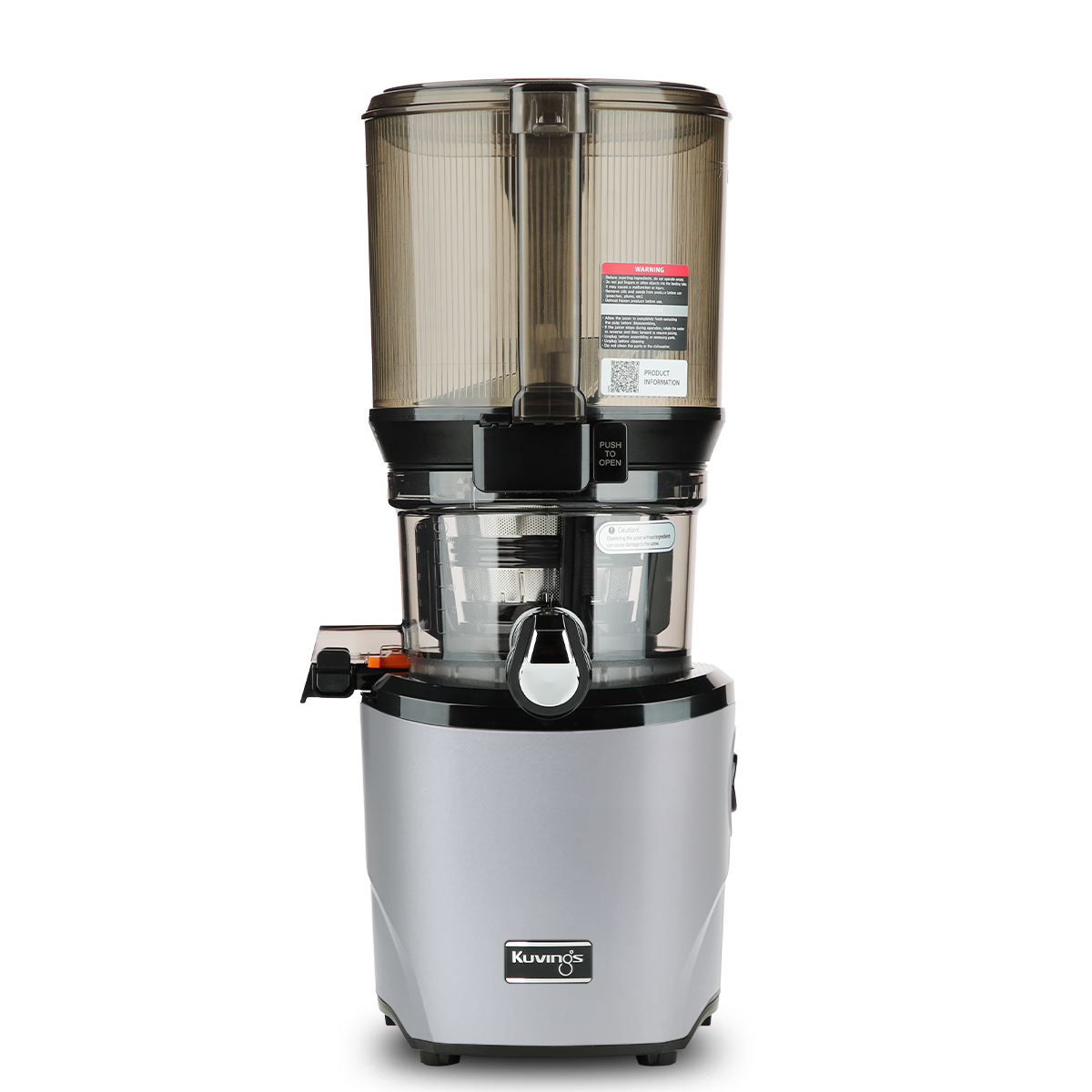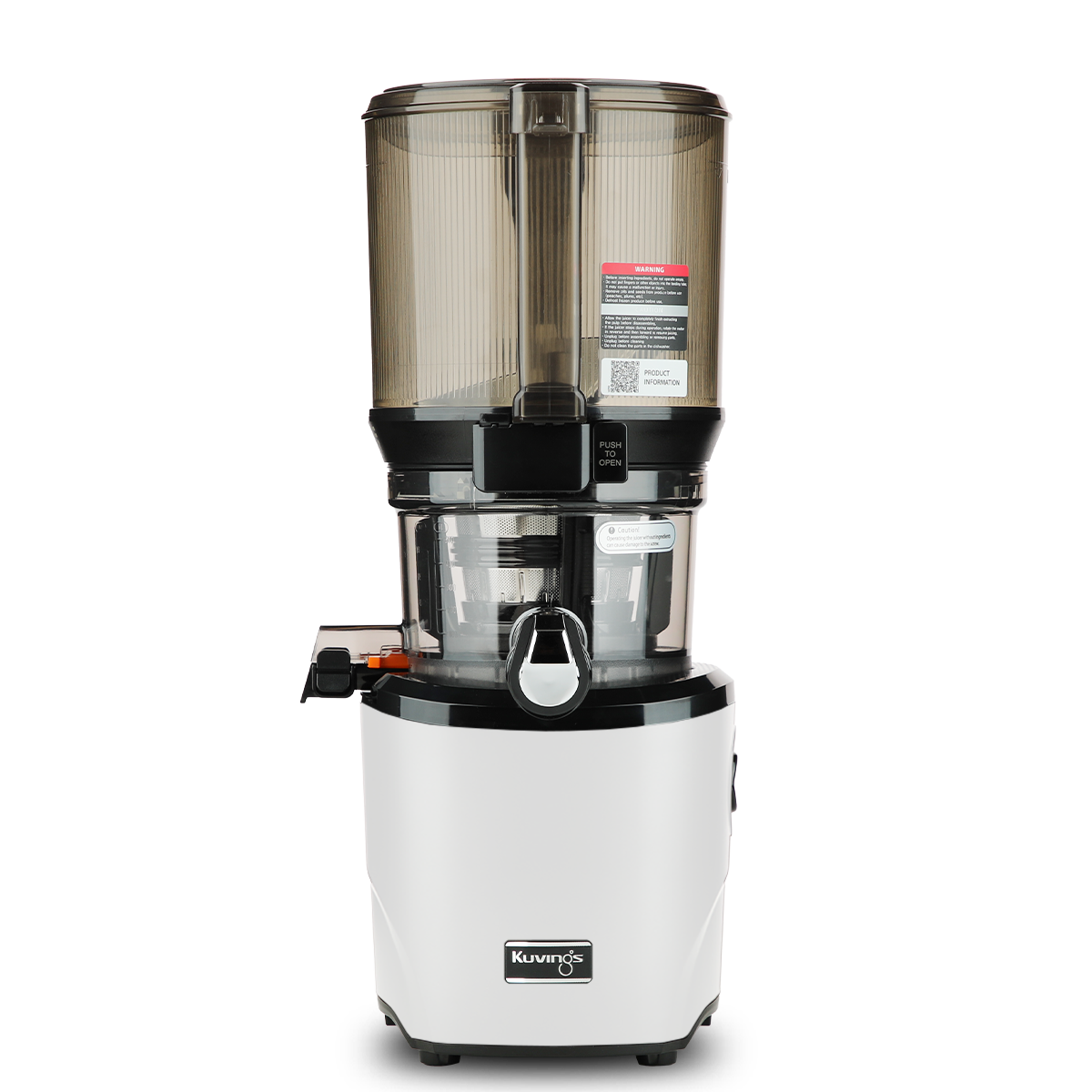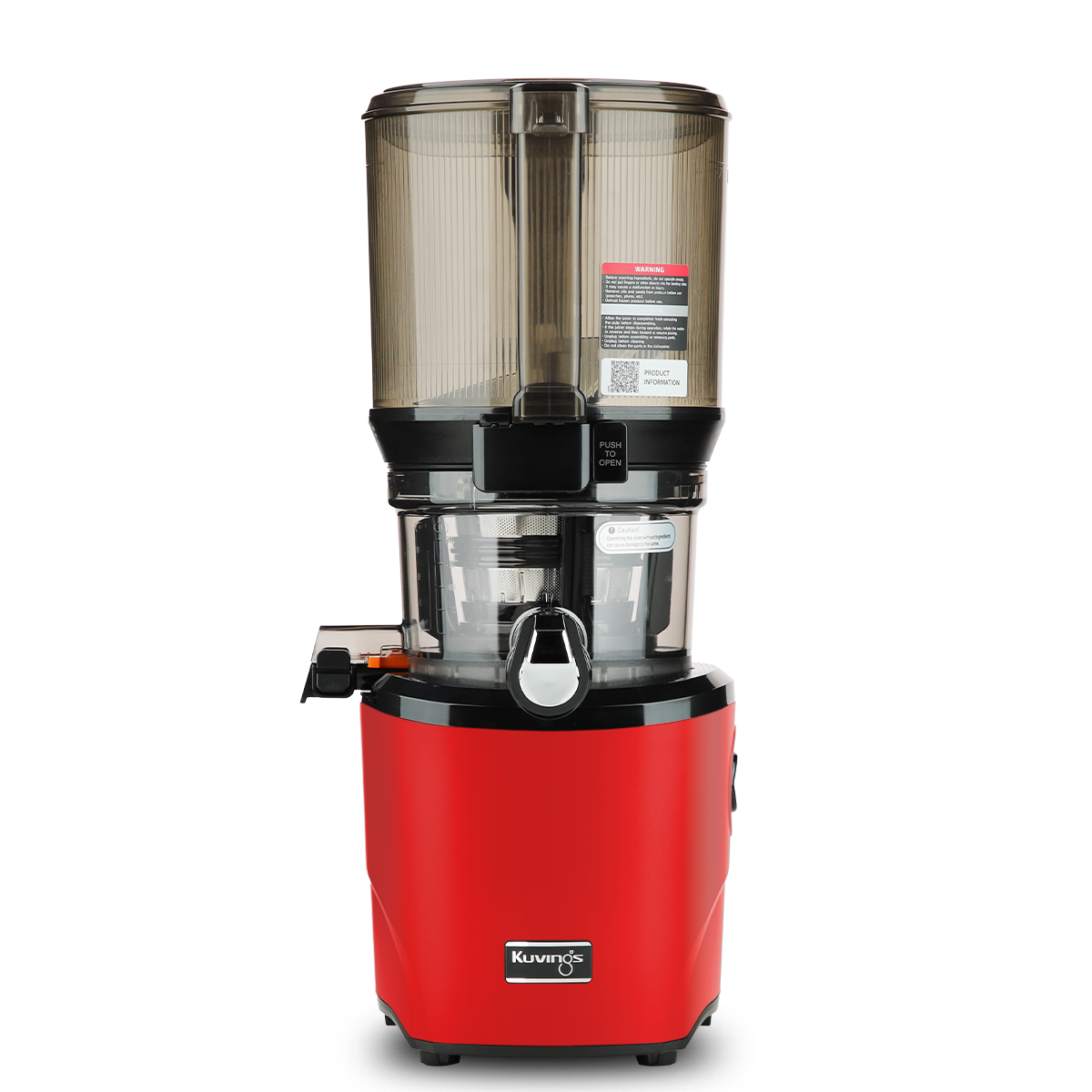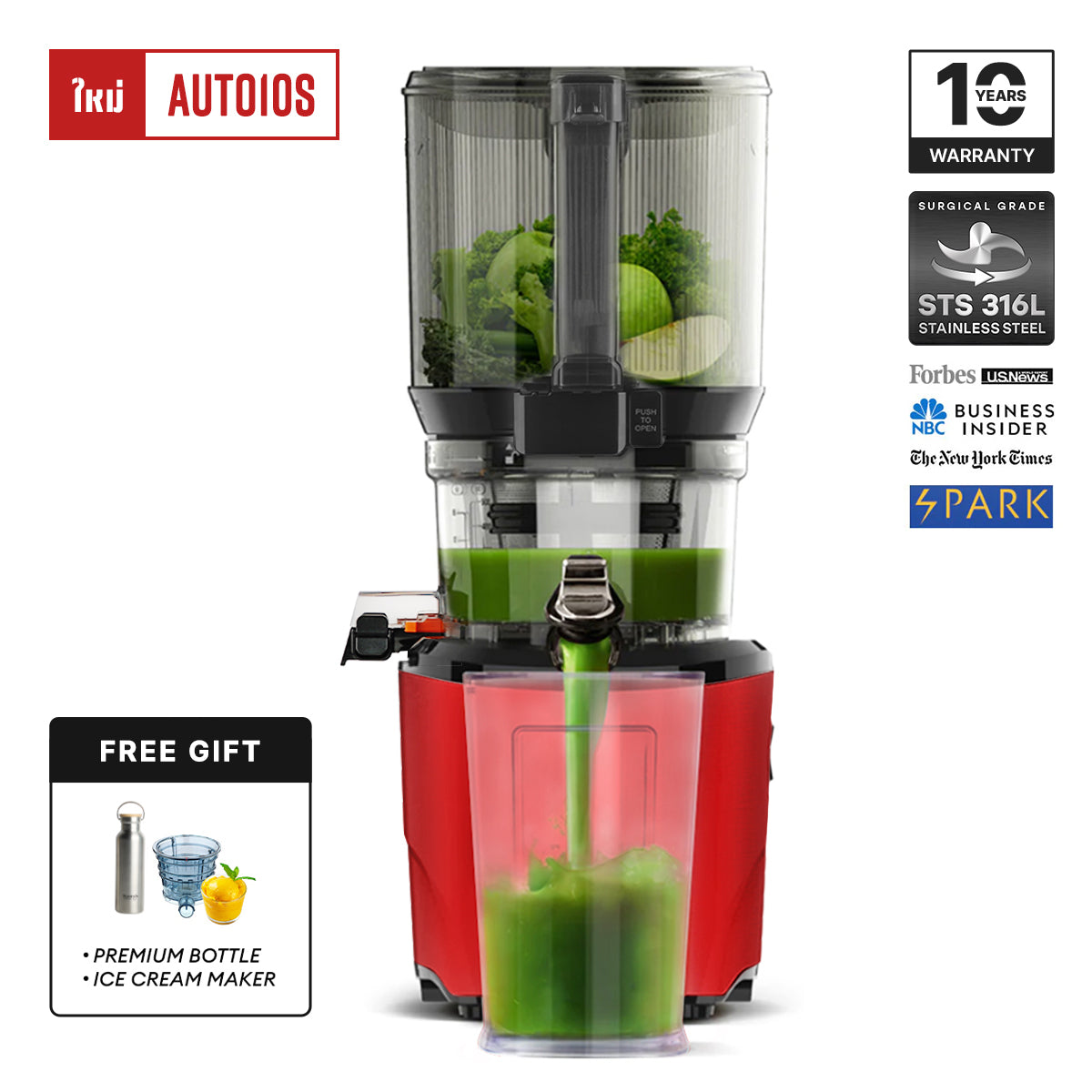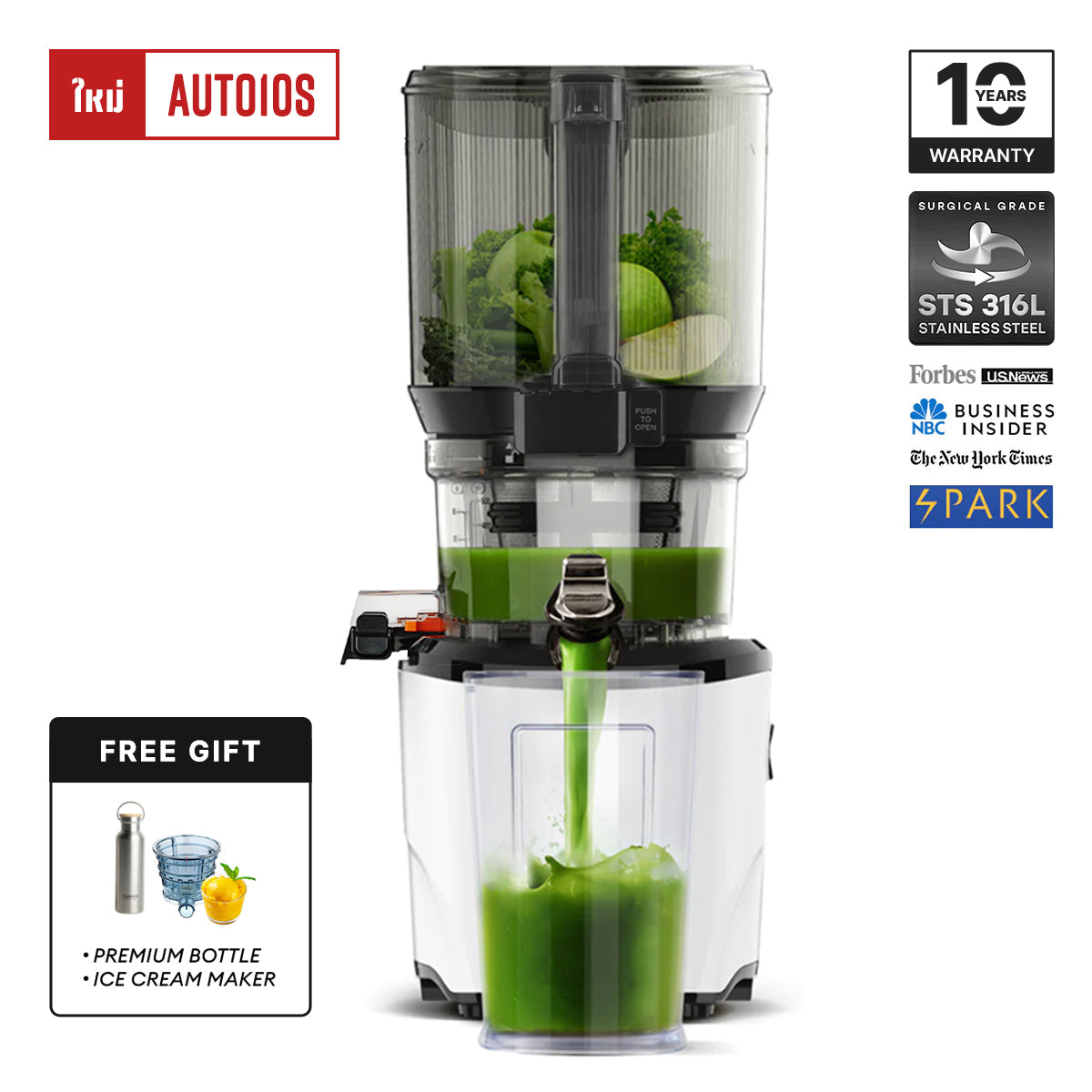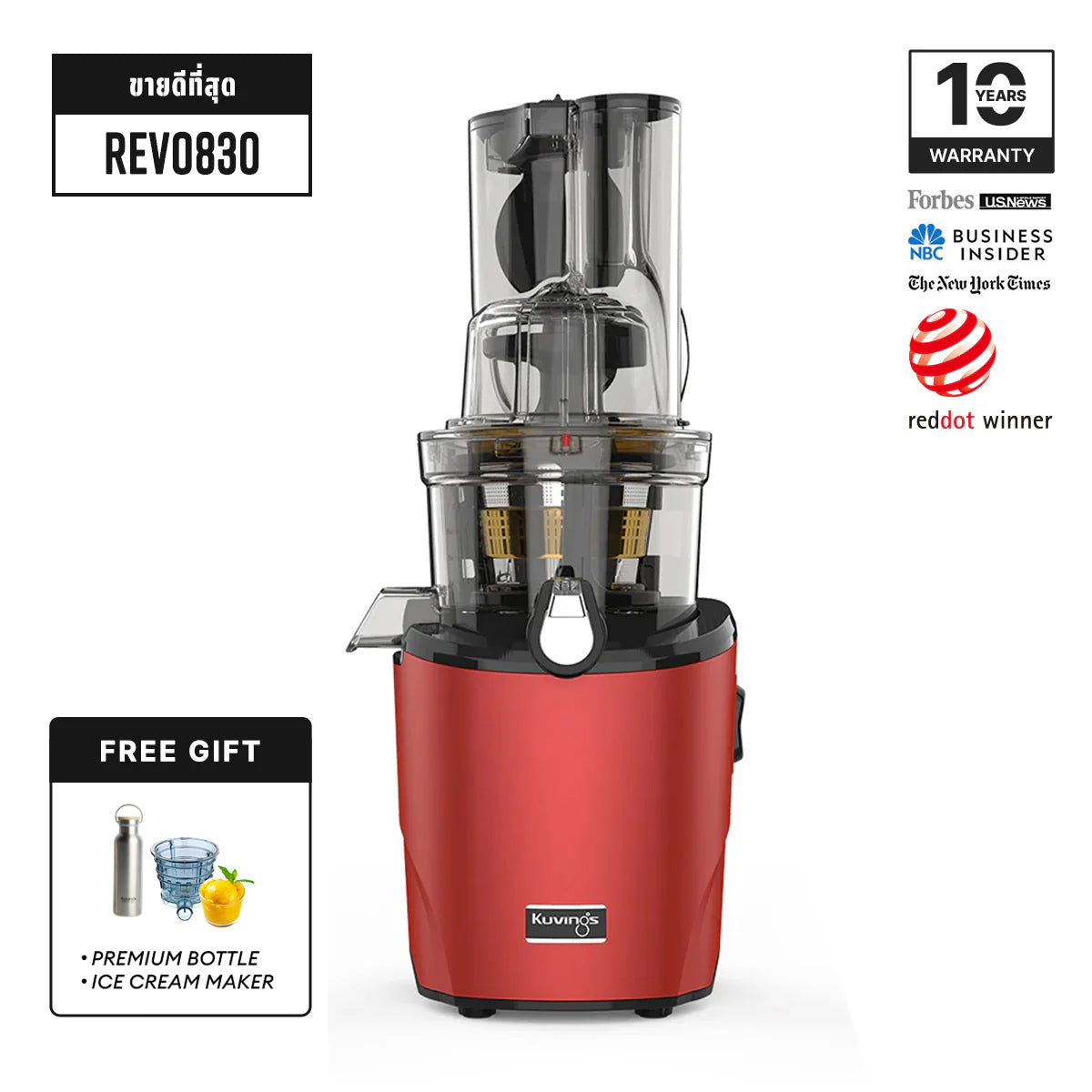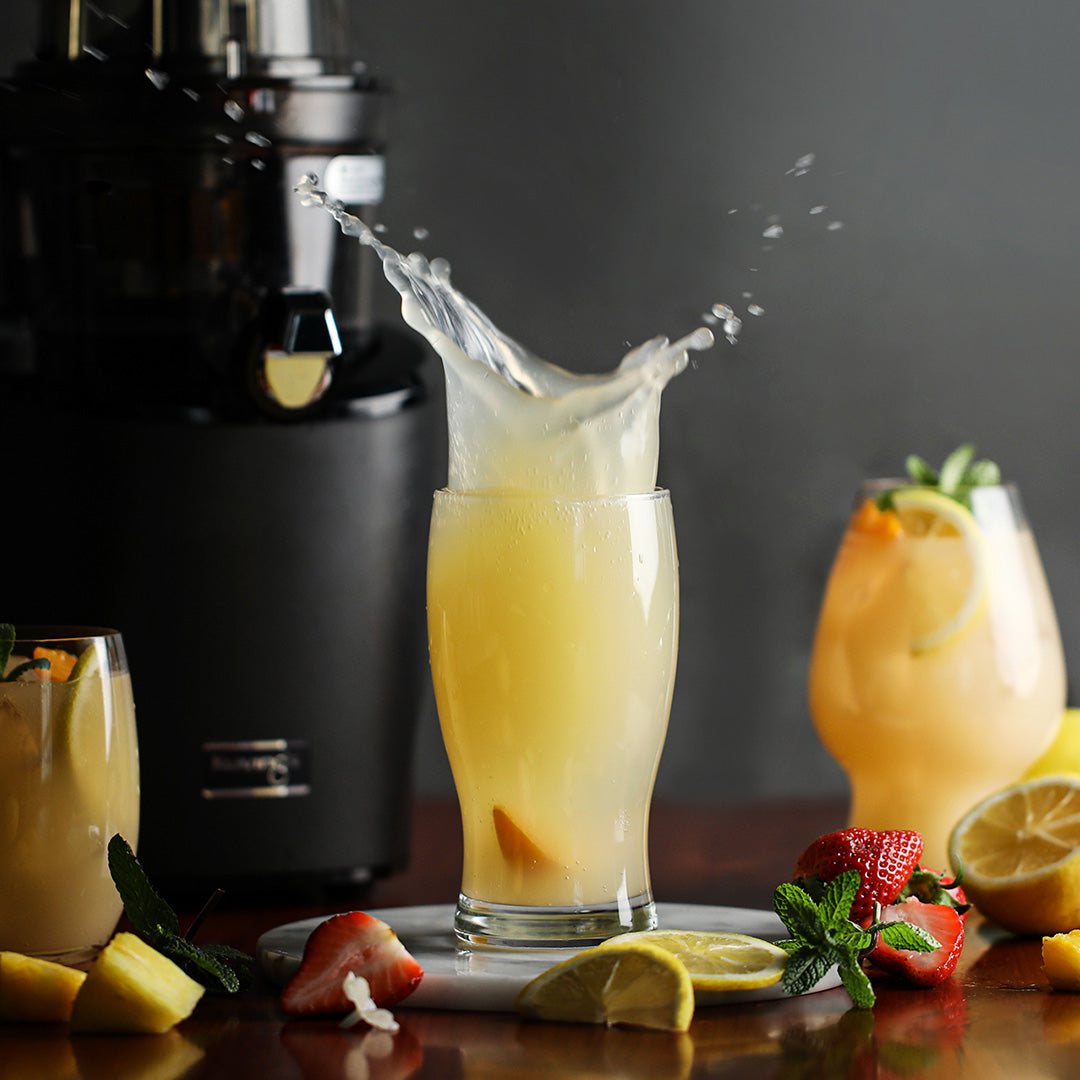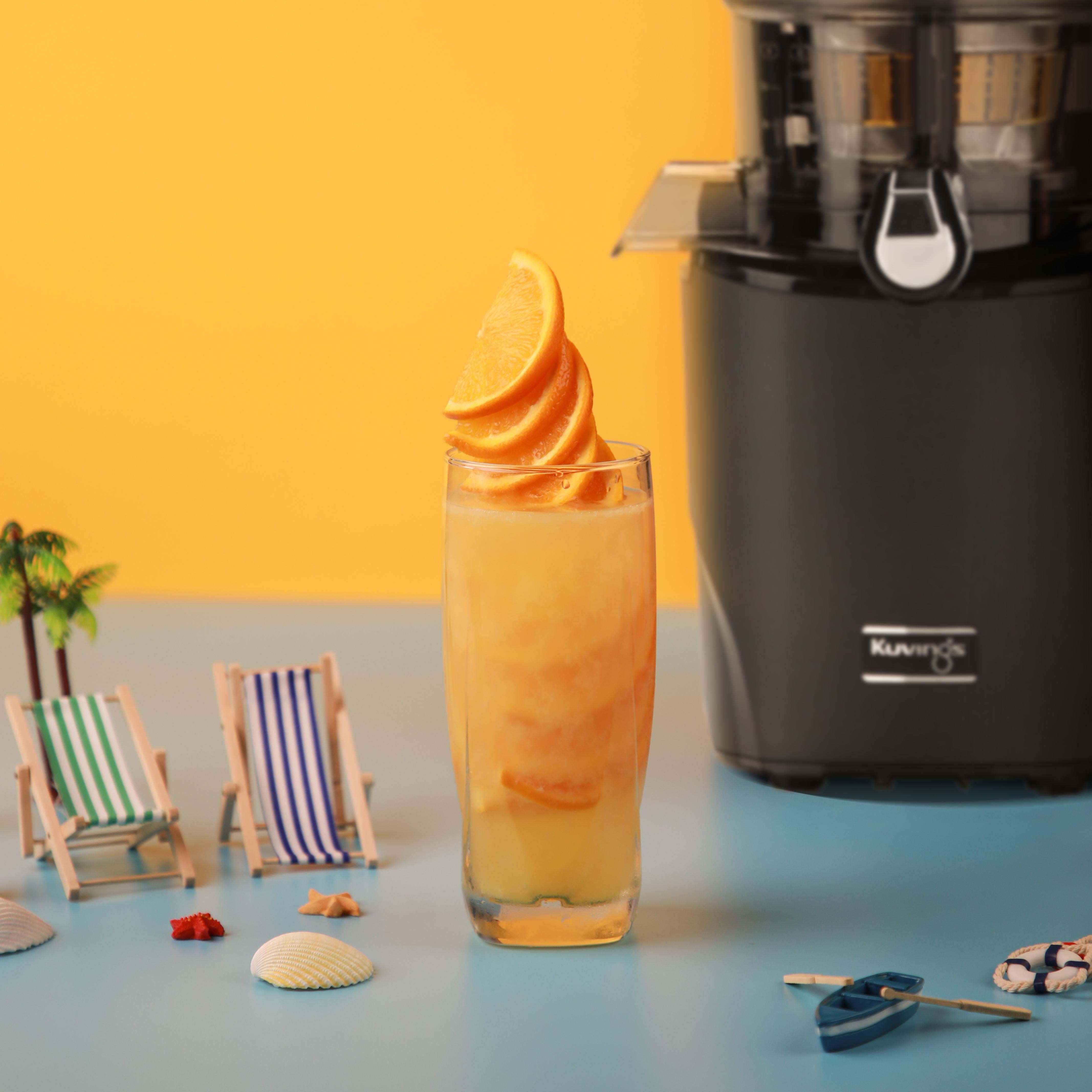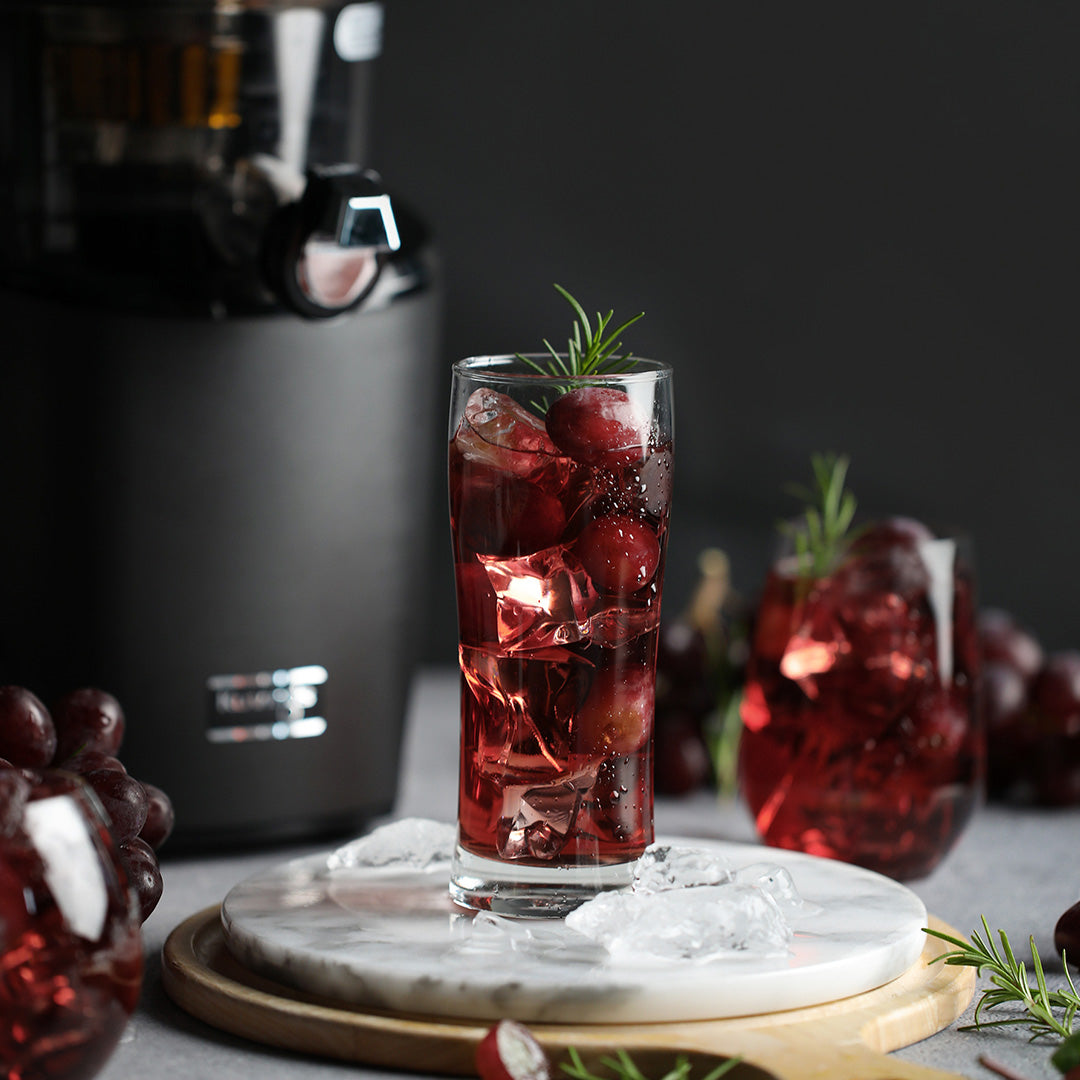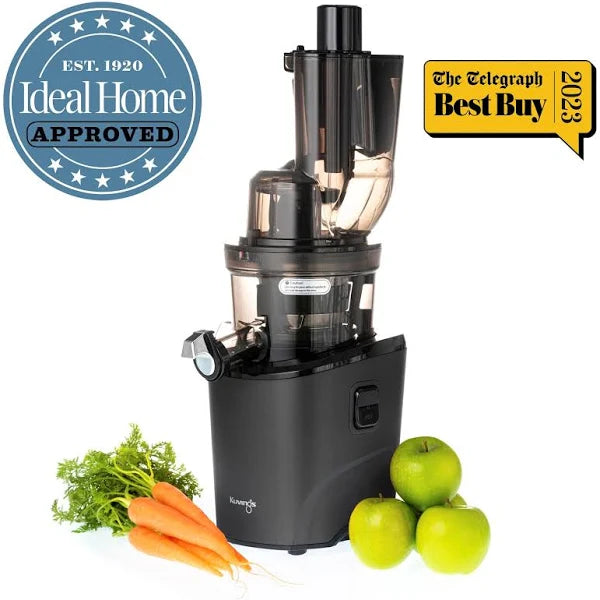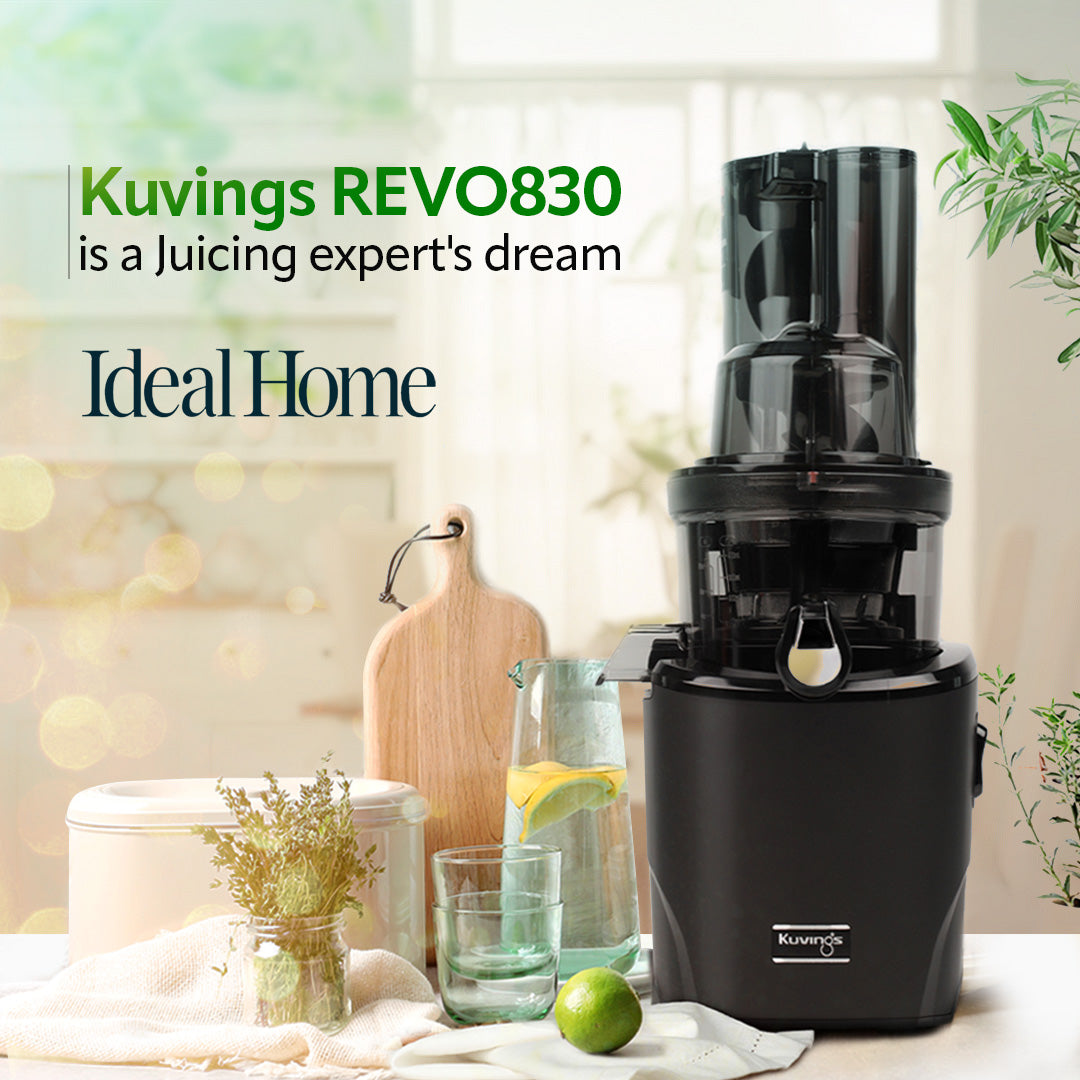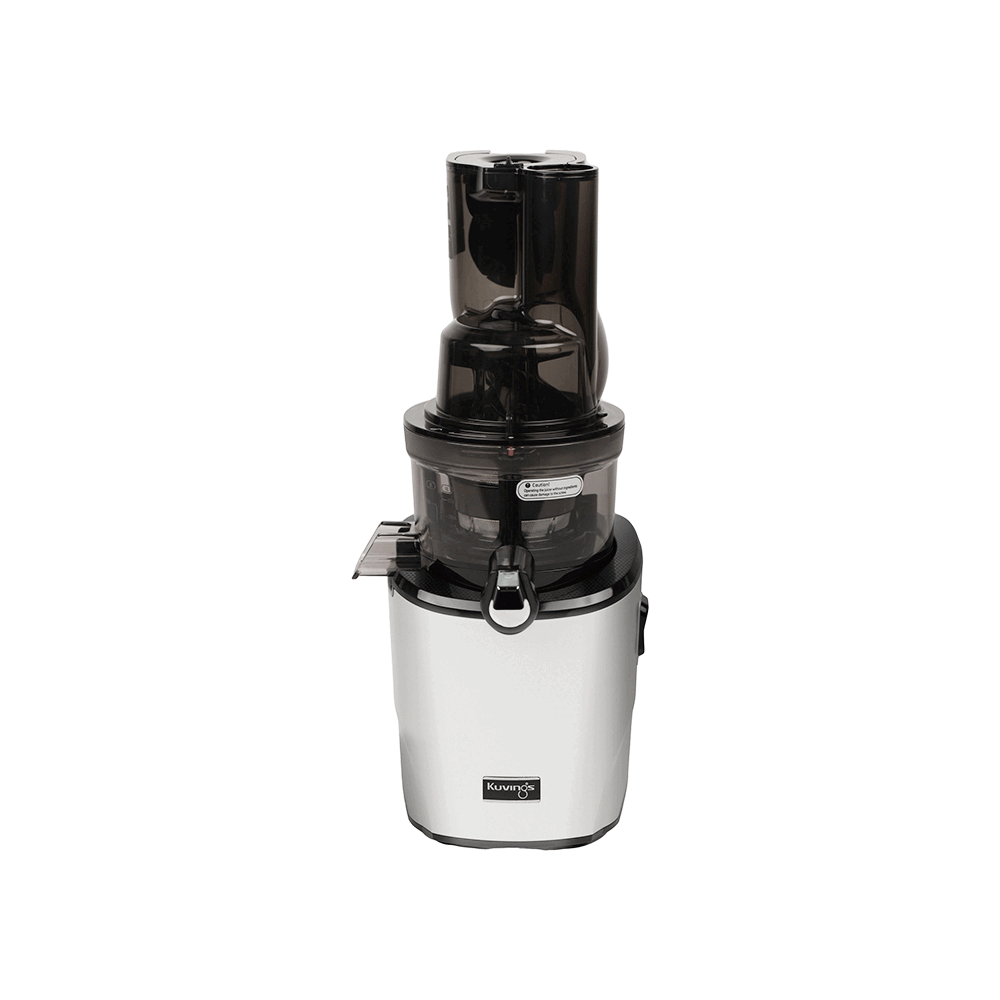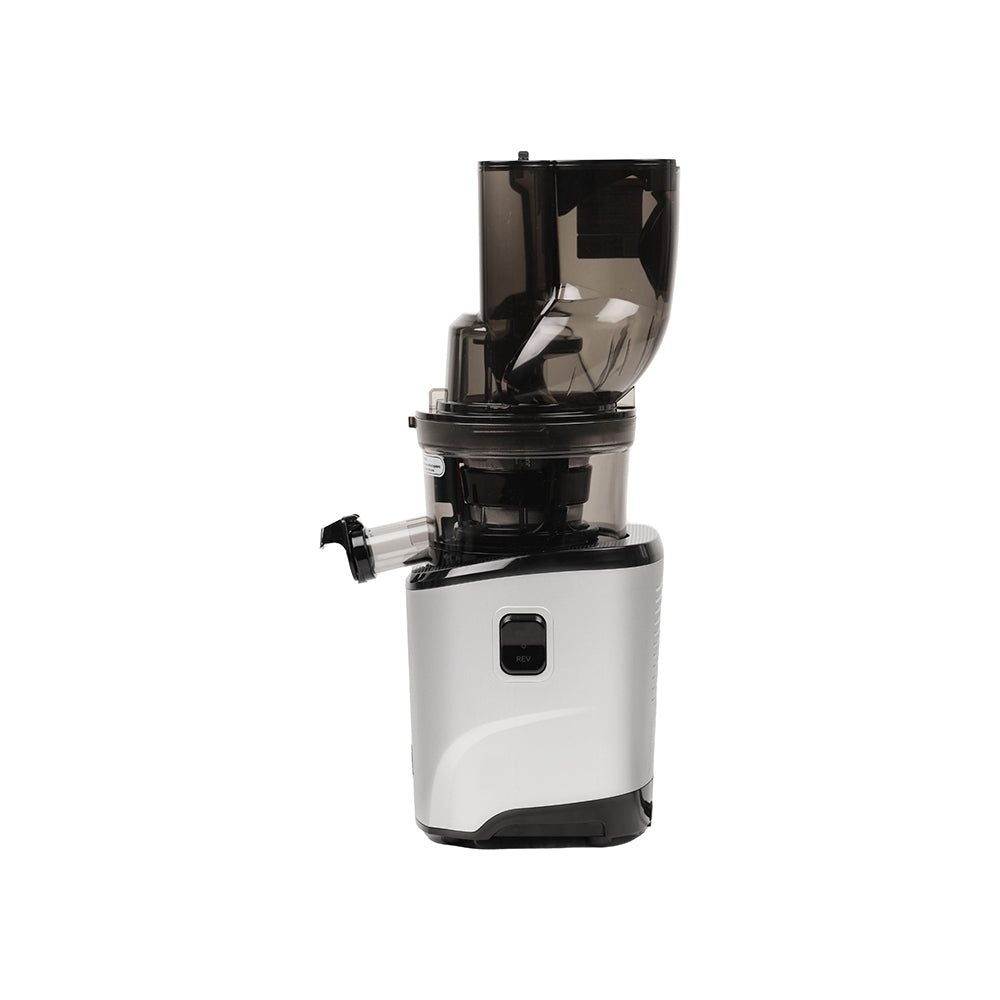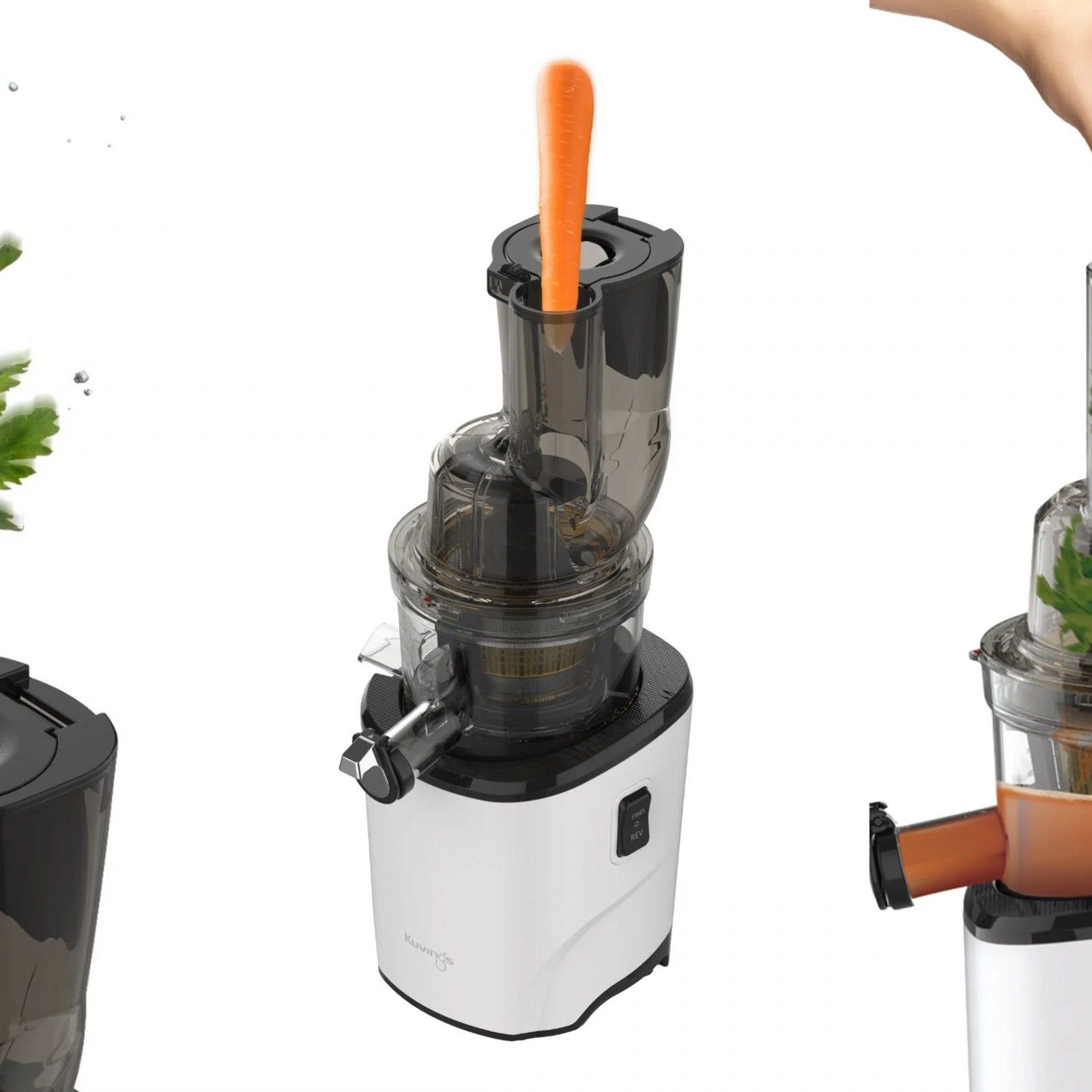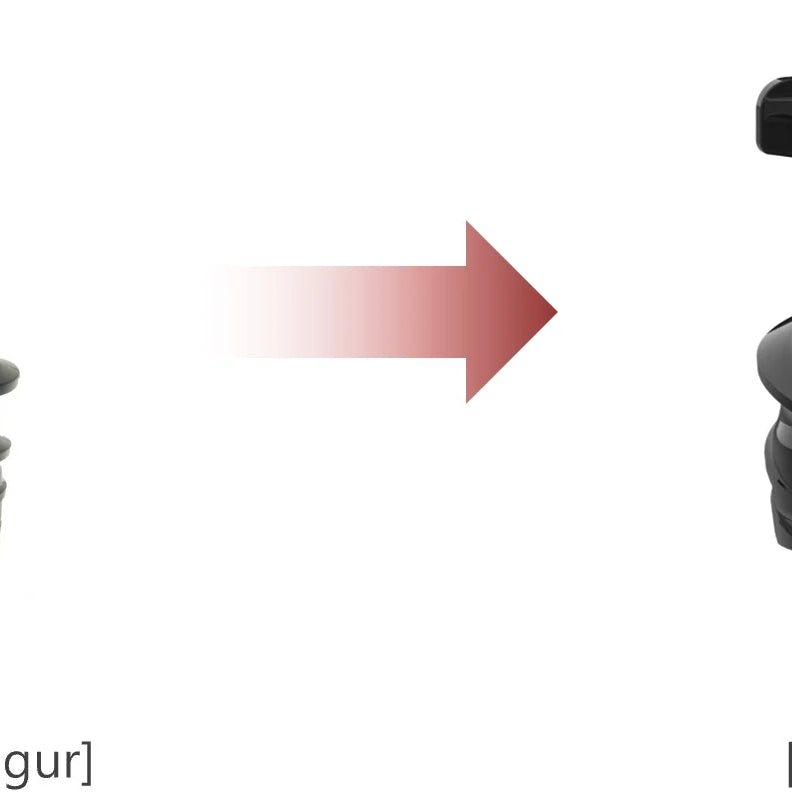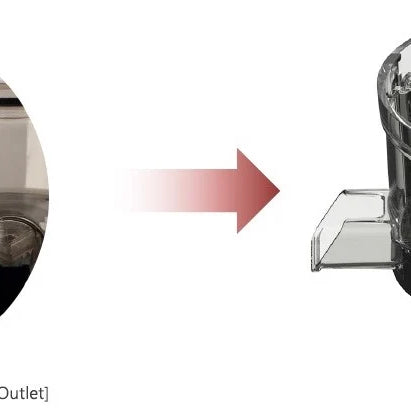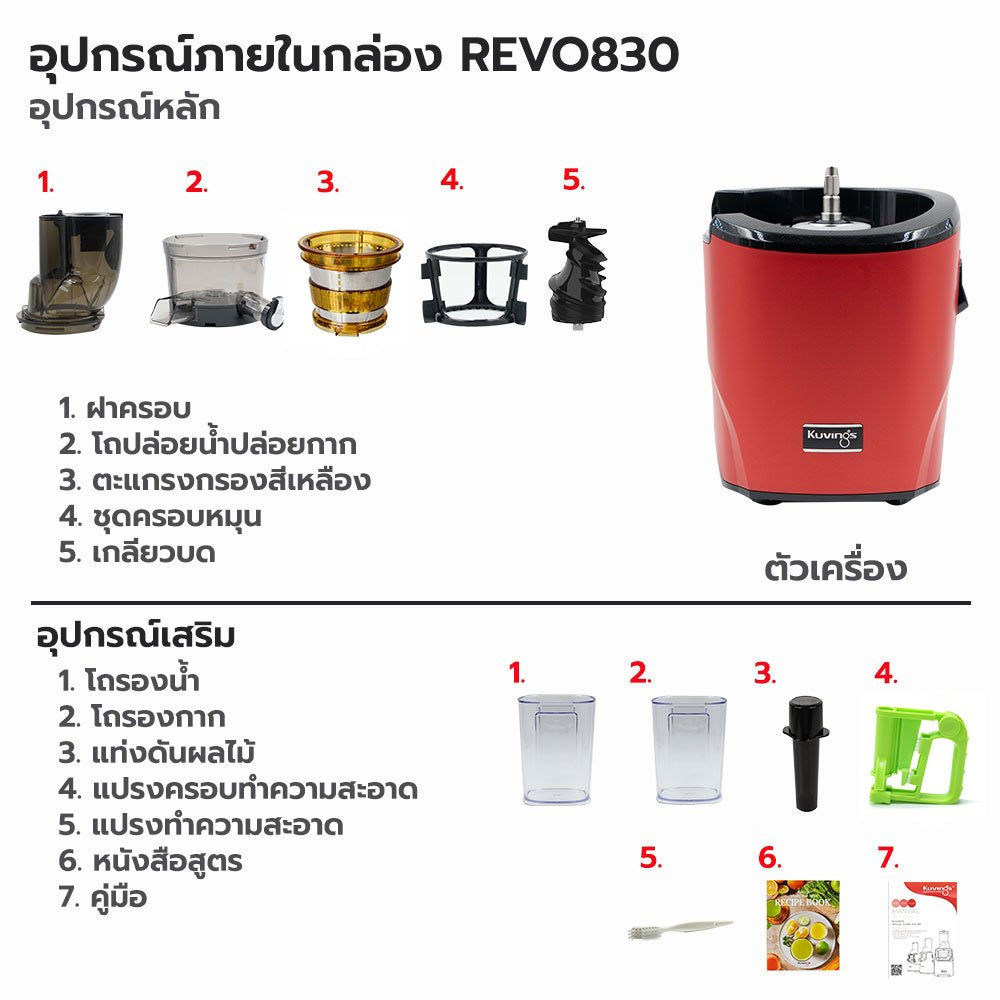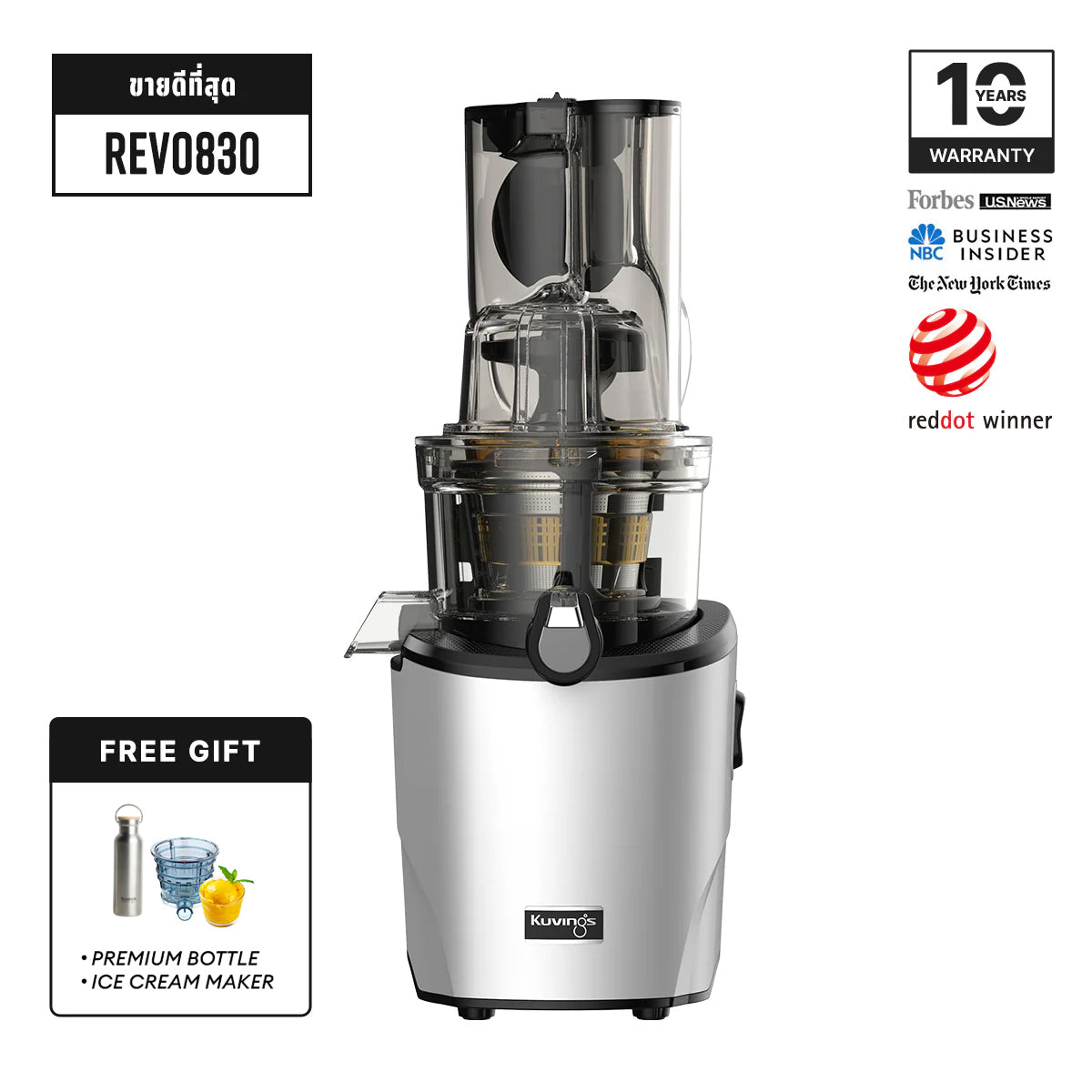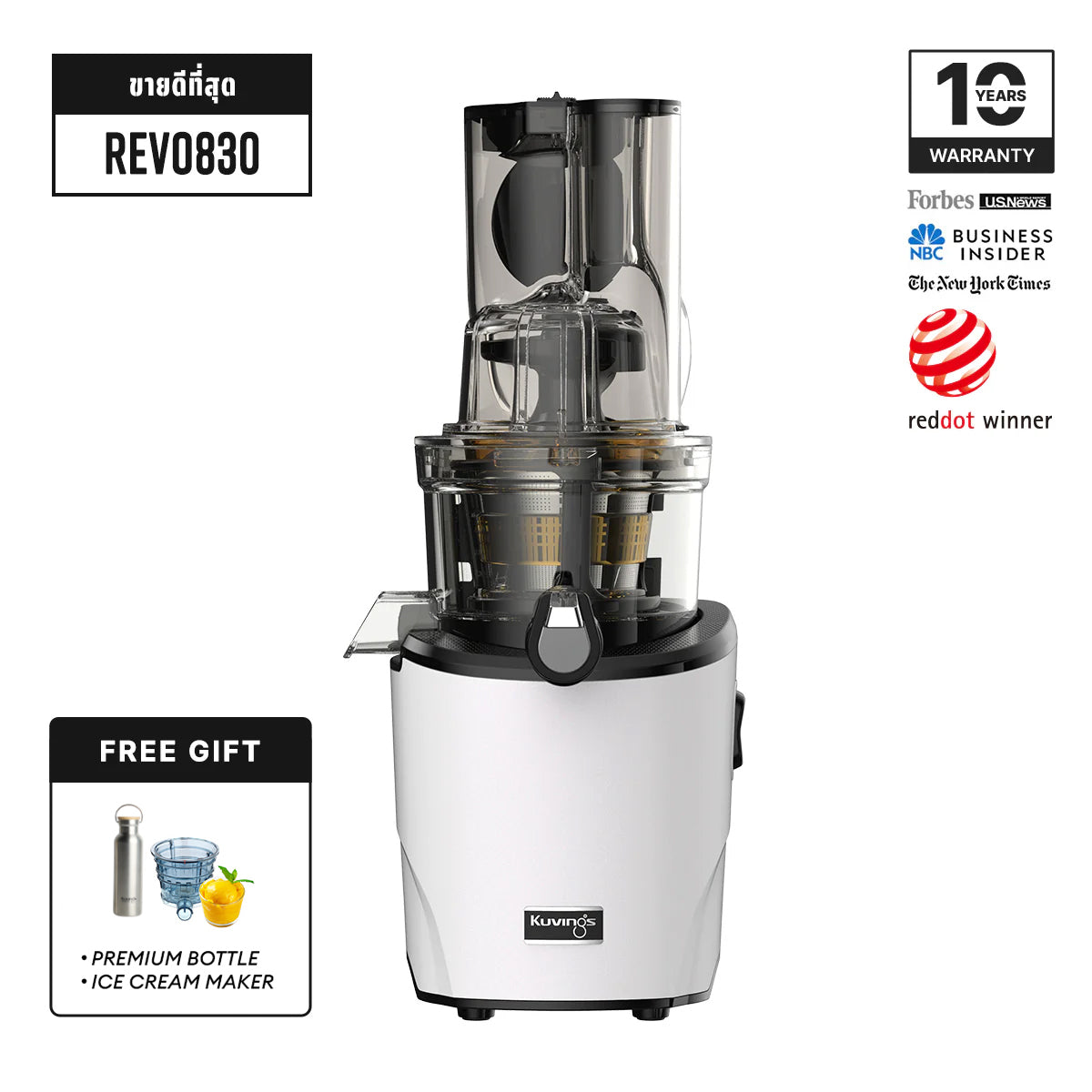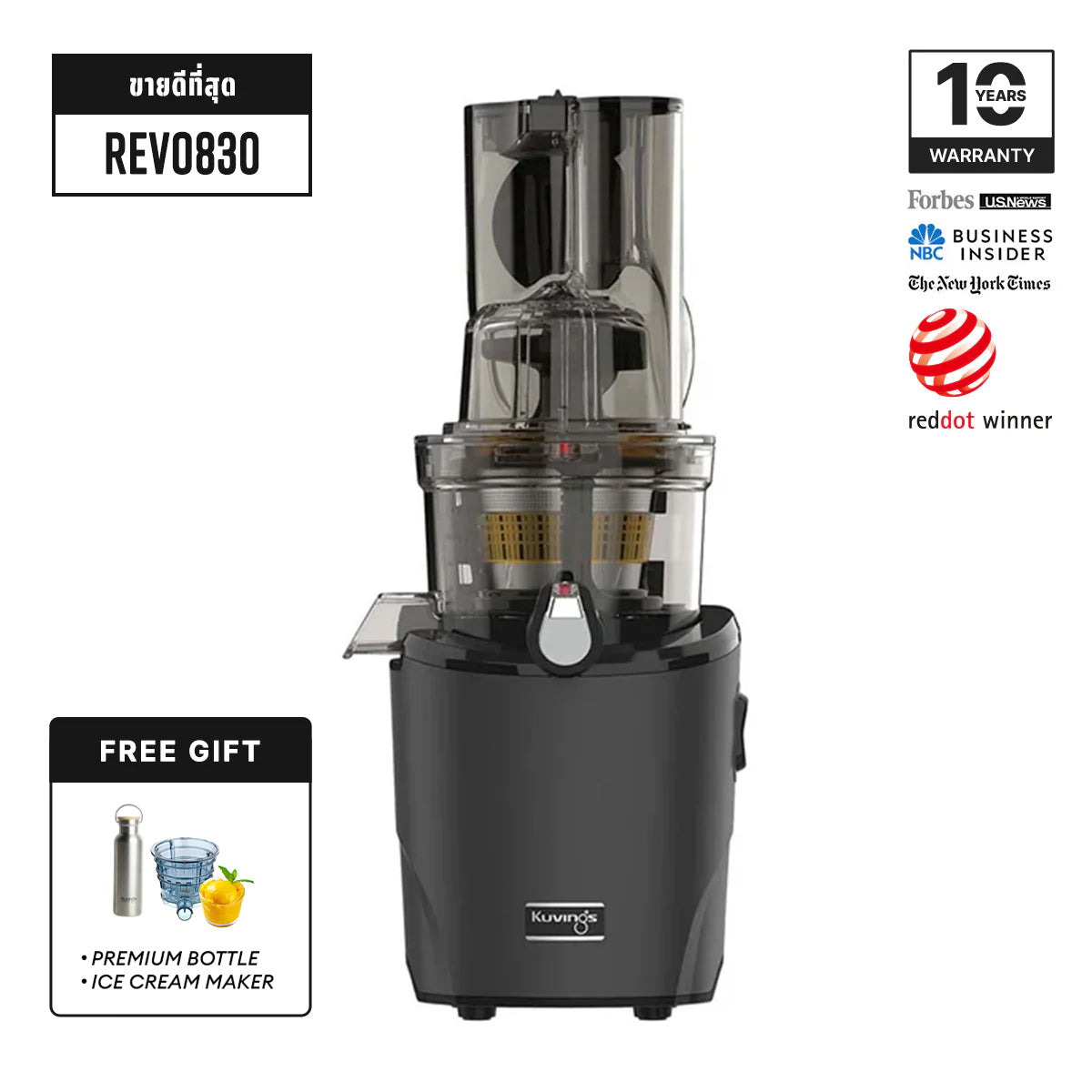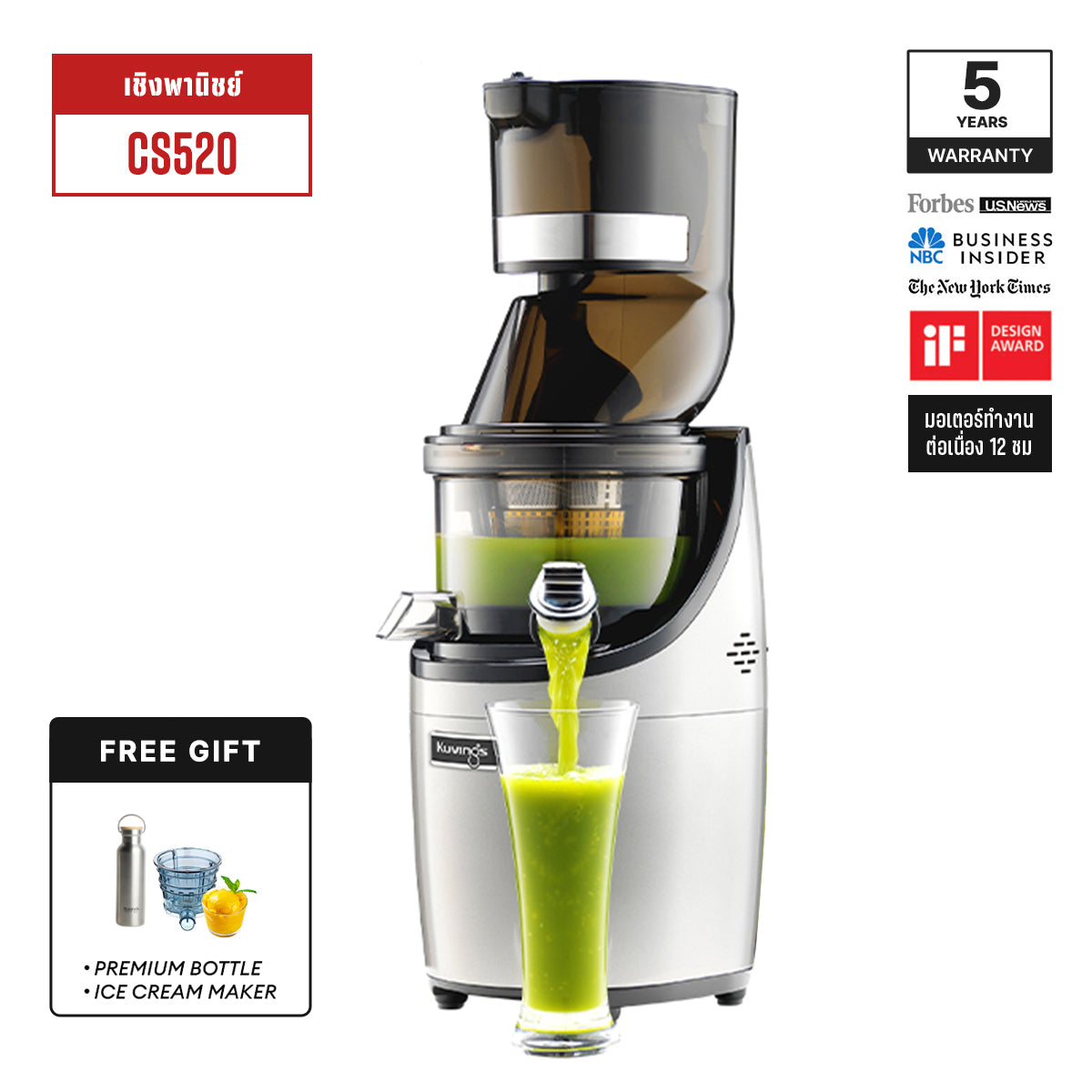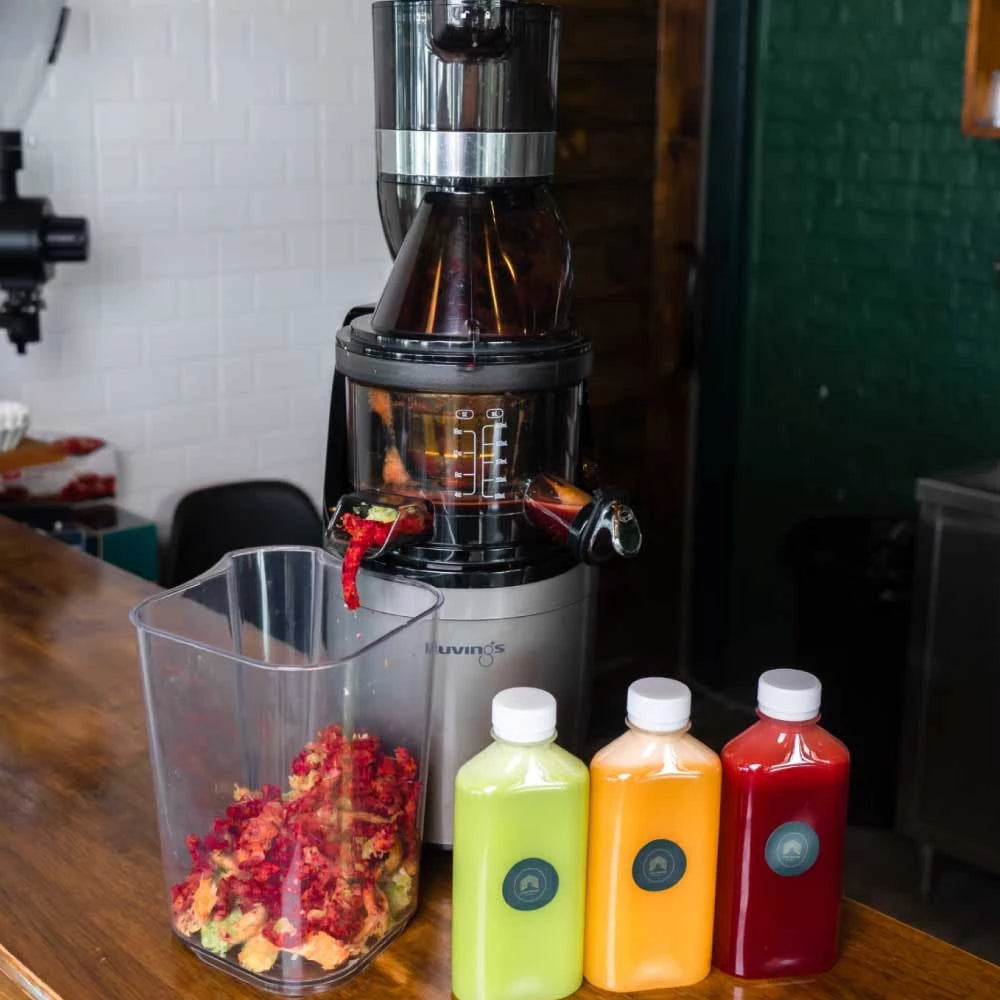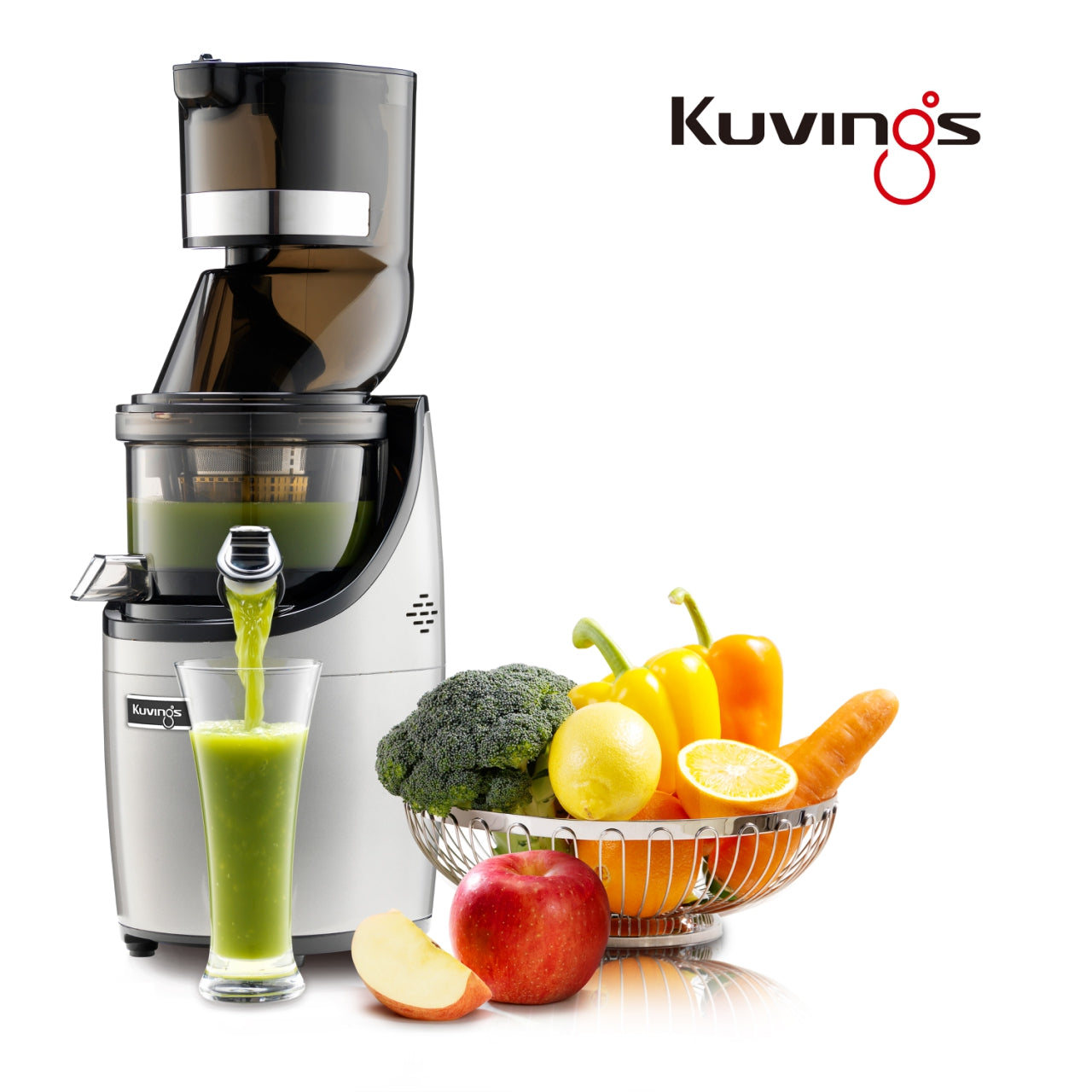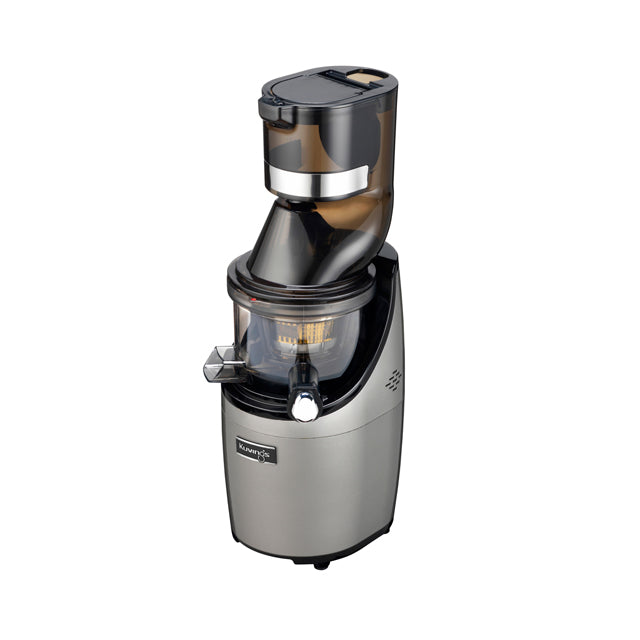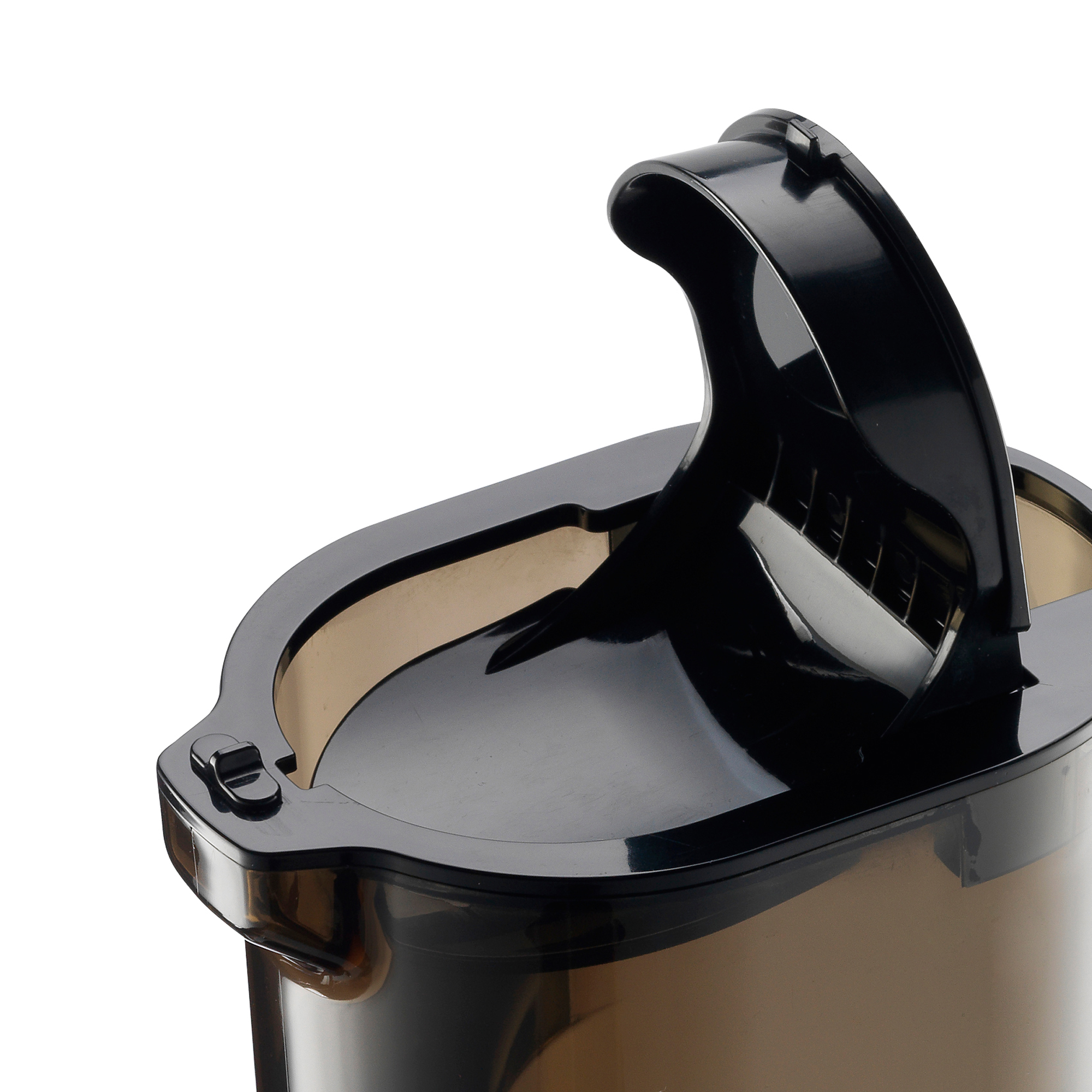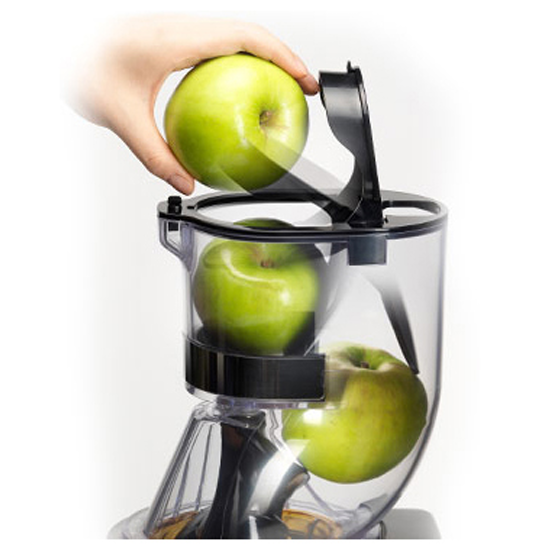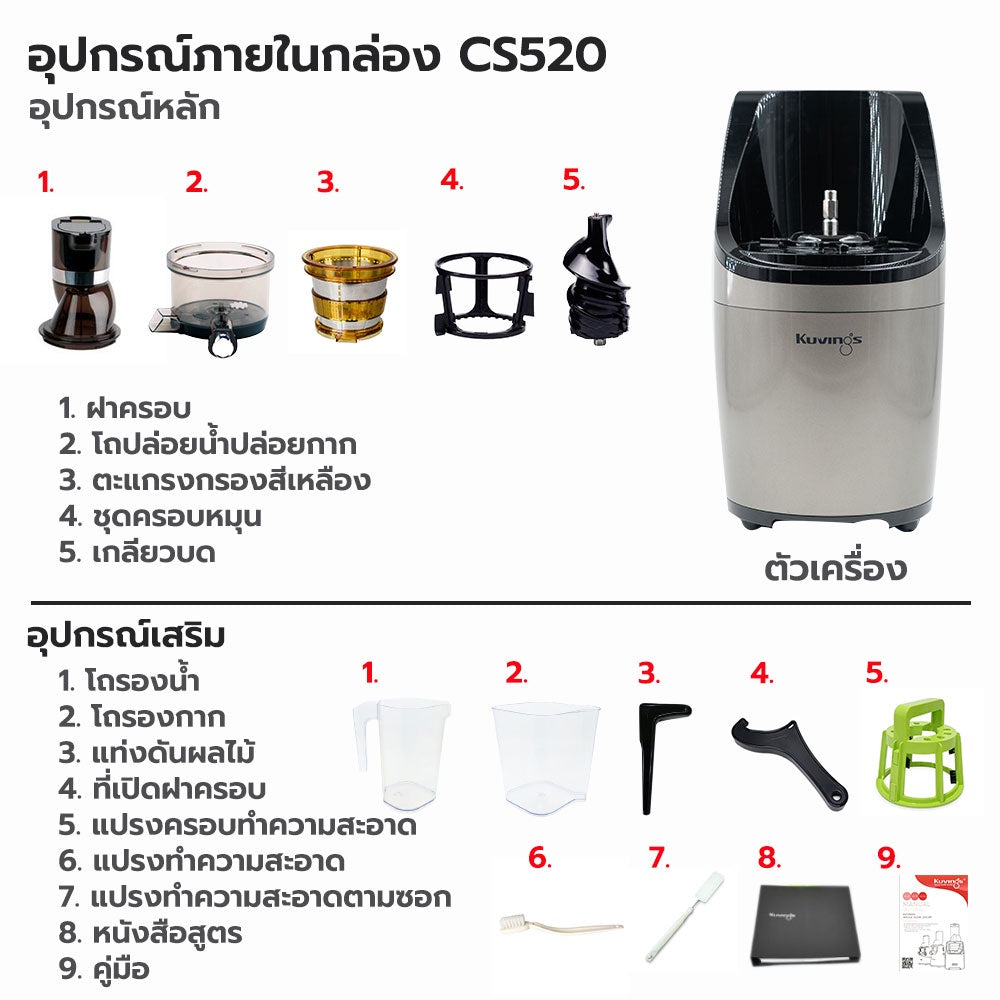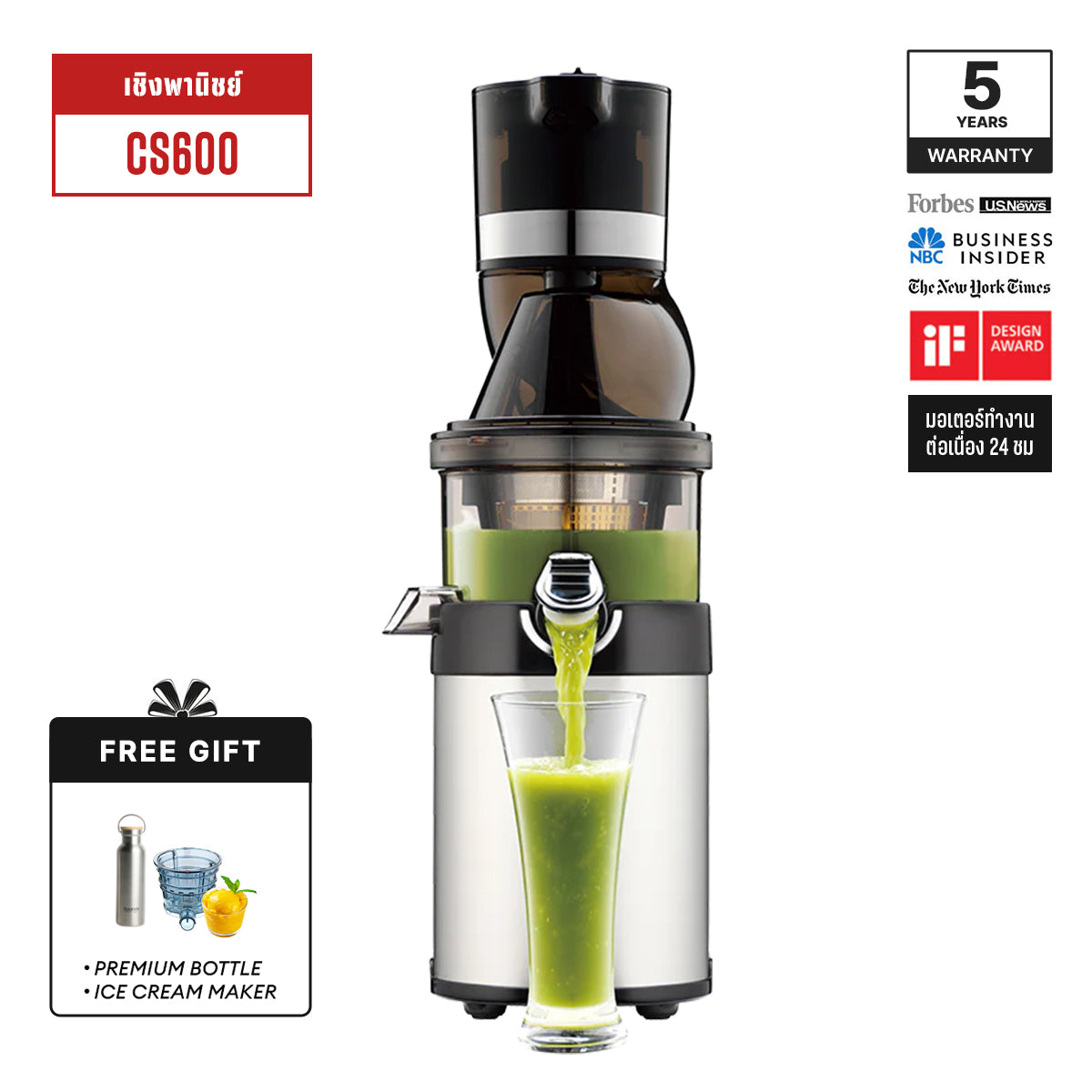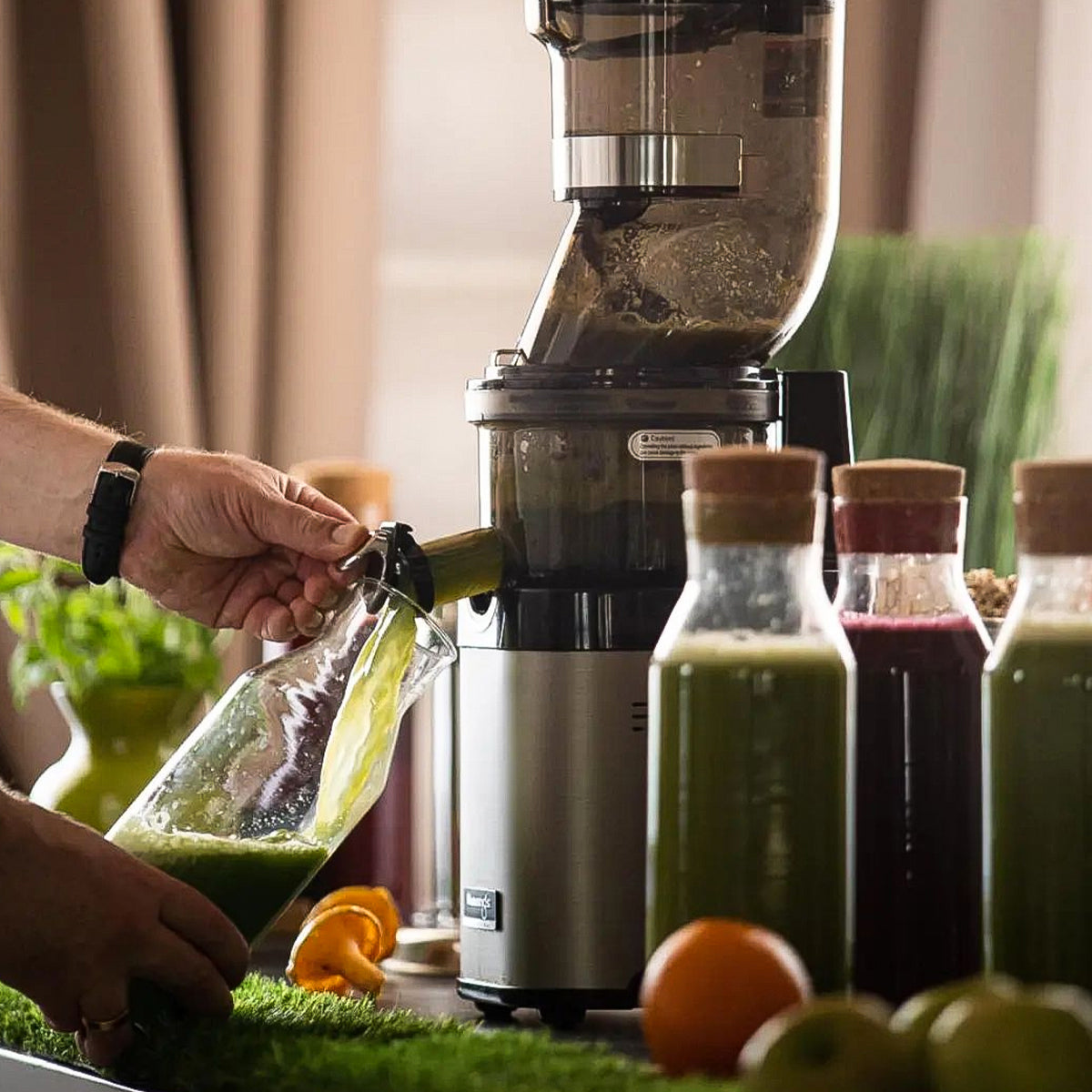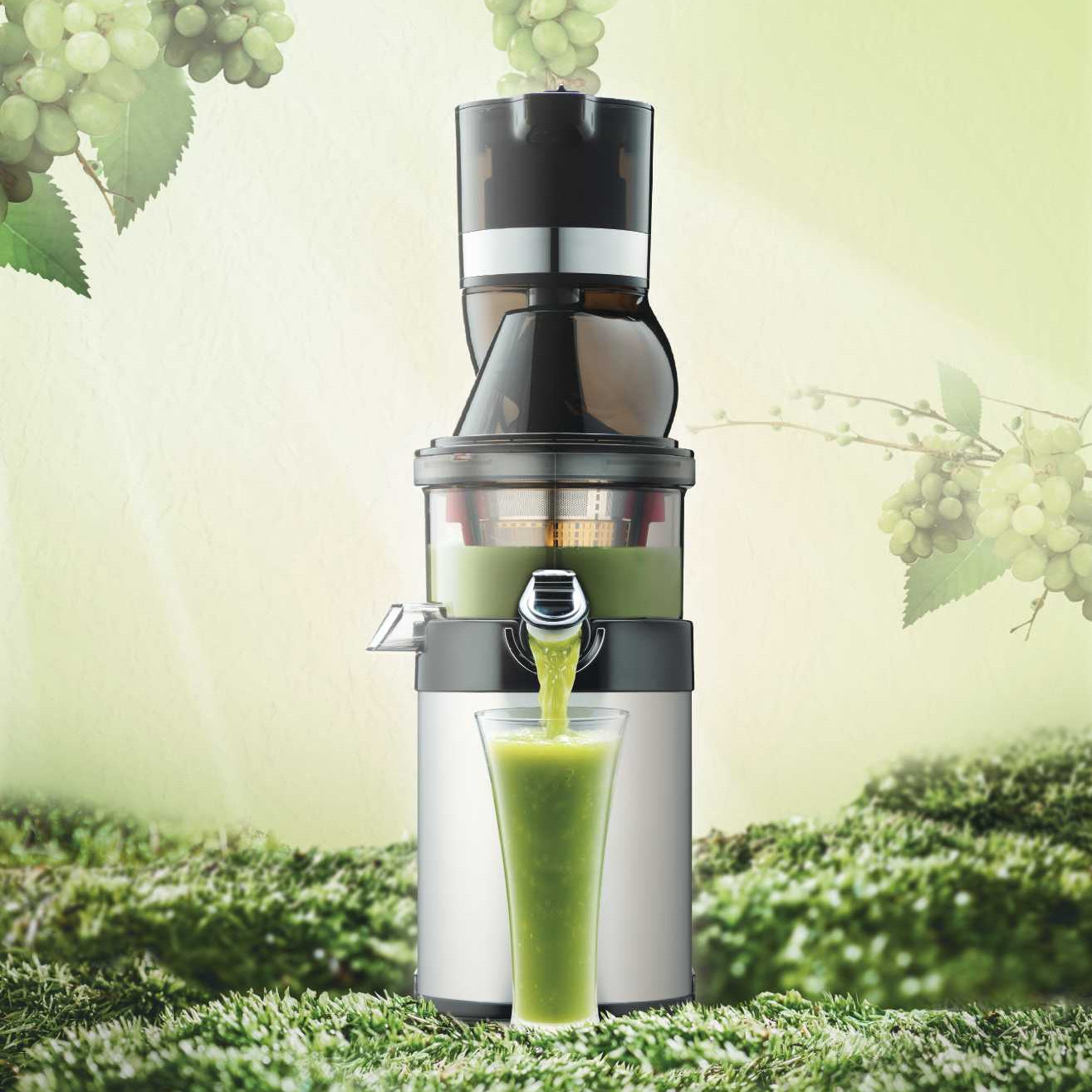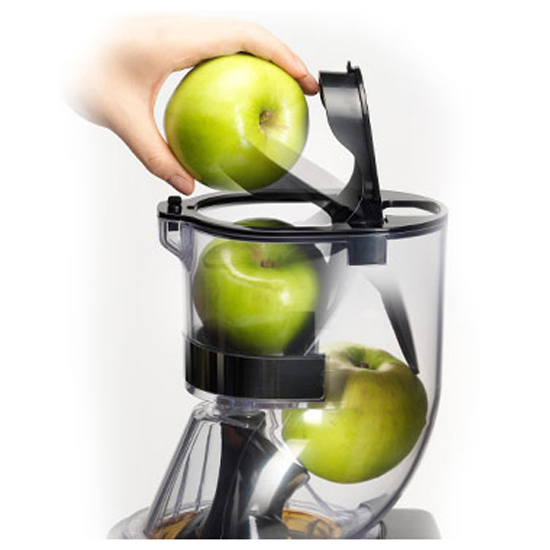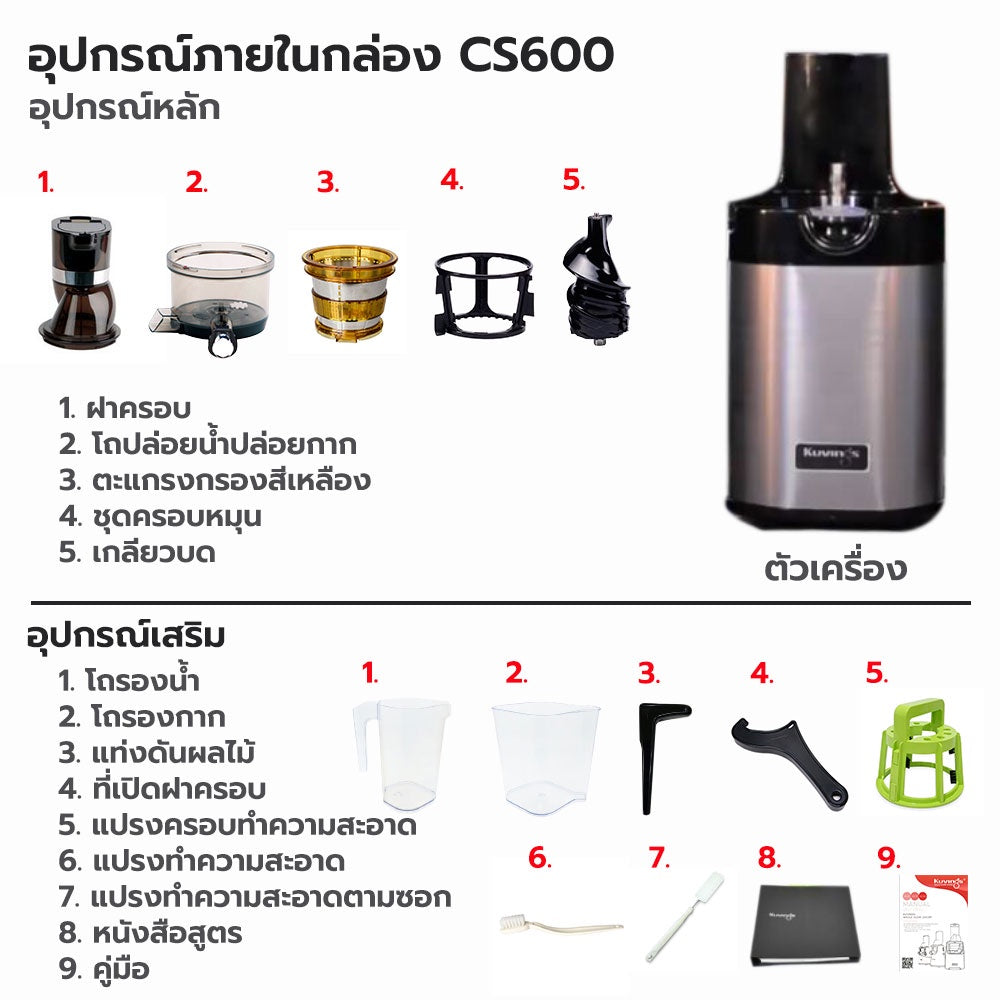

What is Cold Pressed Juice?
Cold pressed juice is made with a specific juice extraction process. Traditionally, cold pressed juice is defined as unheated, unpasteurized juice made with a hydraulic press.
These types of machines grind ingredients into a pulp, which isplaced in a filter bag. Then they apply thousands of pounds of pressure to that bag, which squeezes the liquid out of the pulp.This method harks back to the days of crushing and squeezing ingredientsby hand (or foot) to make wine.
Hand-operated machines, like the image on the right, were once used to press ingredients and collectjuice.
The Health Of Cold Press
You get more juice, more nutrients, more time to keep in the fridge, more benefit from the fruit and veg.
Cold-pressed juice is better than juice from the ordinary juicer because all heat-sensitive nutrients like C vitamins and raw enzymes are preserved.
It also preserves all of the valuable nutrients that are "blown away" in a machine that uses rapidly spinning blades (which generate heat) to squeeze the juice from the fruit and veg.
To be honest, most people don't give too much thought to juice.
_
With cold-pressed juices, you get more bang for your buck and it's also healthier to drink.
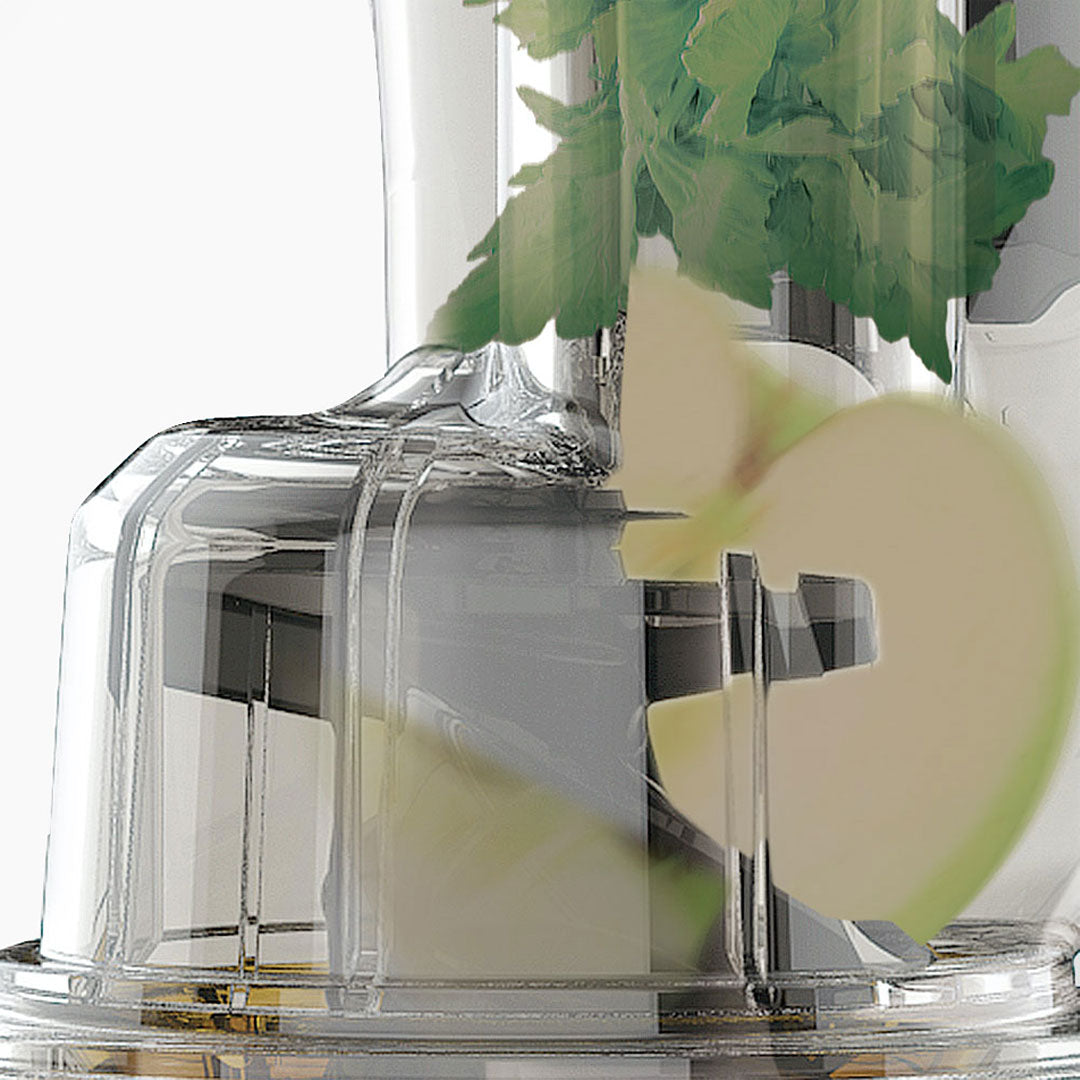
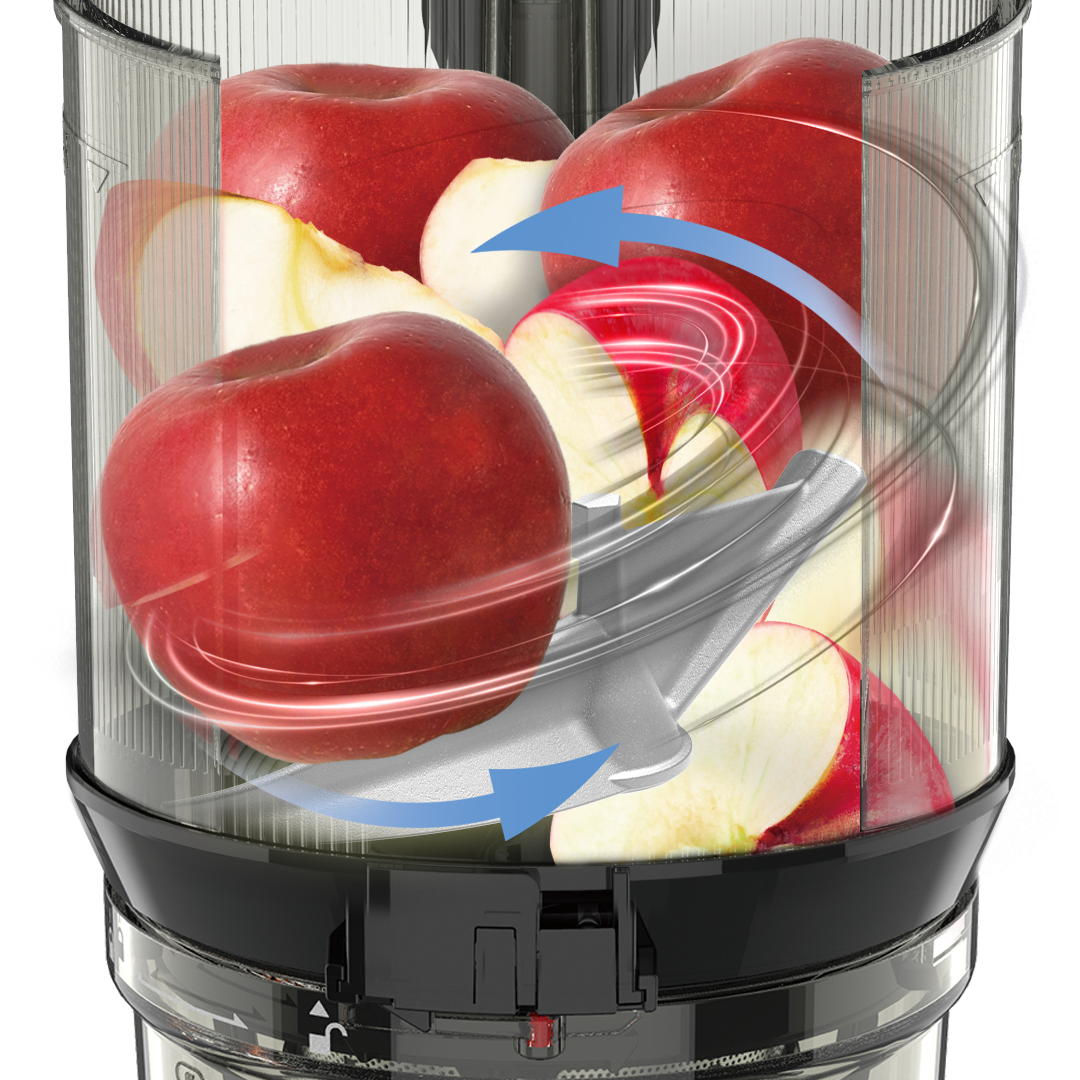
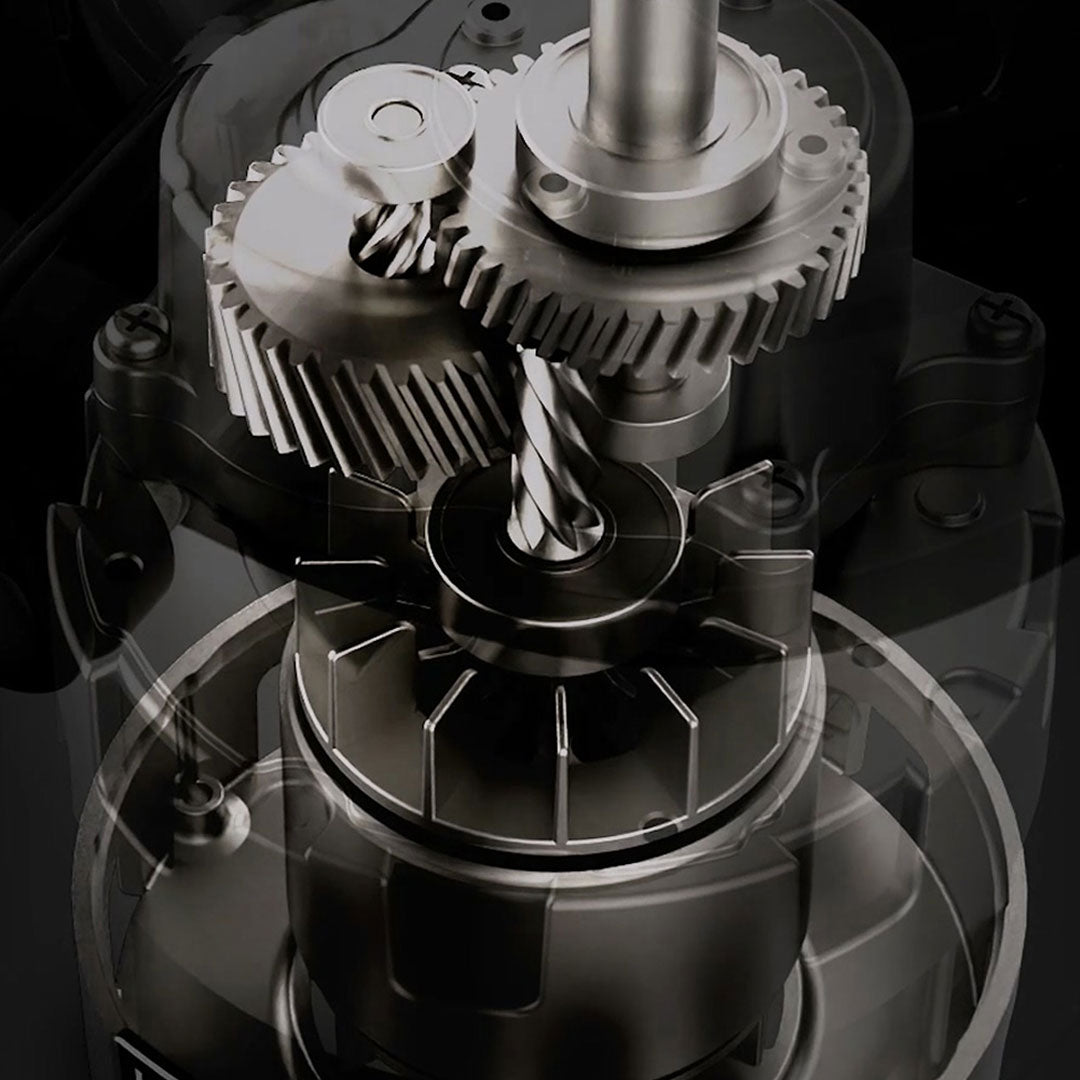
Slow Juicer vs Centrifugal Juicer
So you've already learned a little bit about cold pressing, which involves pressing (or squeezing)
fruits and vegetables to extract the juice. The auger inside the machine rotates at about 52 rpm (repetitions per minute)
- which, ironically, is about the same speed as we chew our food. This is what is called a Slow Juicer.
A traditional way of juicing fruits and vegetables is with a "centrifugal juicer," a juicer with blades that spin at about 12,000 revolutions per minute (rpm).
This way of juicing is super fast, but unfortunately doesn't provide as much nutritional value as many of the vitamins and minerals are lost in transit!
When you put fruit and veg in a juicer machine with rapidly spinning blades, those blades act like a machete - tearing up the fruit and veg and shredding it so you get the juice.
As the blades rotate in the bowl, the juice is separated into the press bowl and the pulp ends up as waste (or compost) in the pulp bowl.
Fast-spinning blades naturally generate heat, meaning any heat-sensitive vitamins won't survive this journey and will be destroyed before you get them. The result is a very watery,discolored juice.
The juice has started to oxidize (decompose)naturally because it had to suck air into the machine to keep the blades spinning the way they do. You know this is the case because if you let this type of juice sit for a moment,the water separates from the soluble fiber (juice) due to the nature of the extraction. The oxidation process begins the moment the device rips and tears open the fruit with its metal blades.
This type of juice cannot be stored and must be drunk immediately. You still get some good stuff, of course, so don't freak out, just do some research on the two types of juicers that are available in the market. The image below shows the difference between fast and slow (or cold-pressed juice).
_
While the fast juicers cut and grind at about 12,000 rpm,slow juicers squeeze and press at around 50-60 rpm.
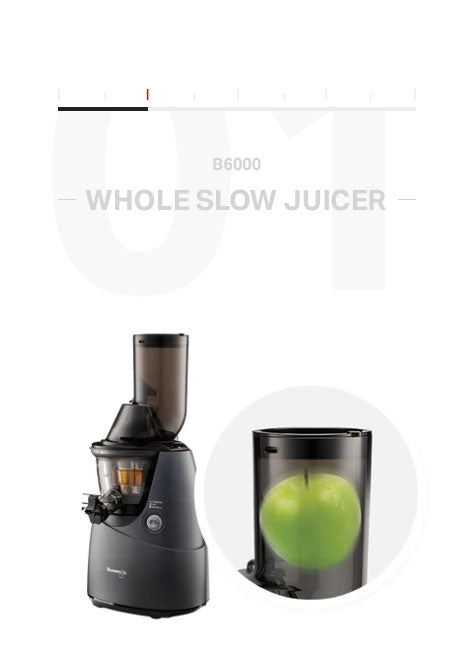
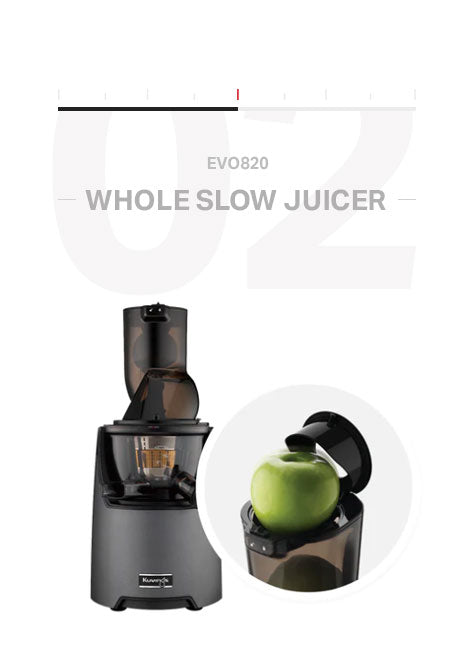
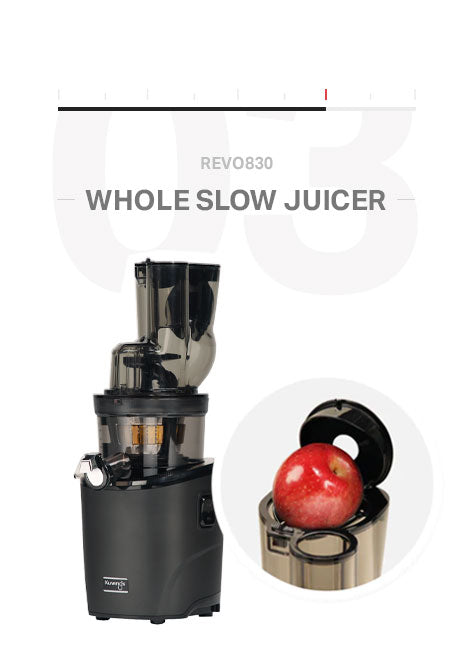
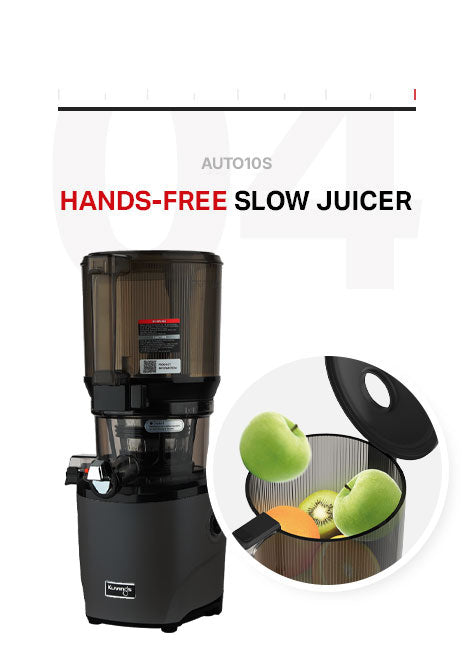
What About The Fiber?
Now, we don’t always sit down to eat 10 carrots, 1 whole beet, 3 apples, 1 lemon and a thumb size bit of ginger – we just don’t. But with a cold-press juicer, you can drink the juice in no time, and all of nature's goodness will enter your cells instantly. The juice doesn't need to be digested, you've already done that by removing the insoluble (non-degradable) fiber from it. So it can start, and it does start!!!
While we're at it, let's talk about the "elephant in the room" - fiber.


Okay, we all know we need fiber. Yes, that's right.
But believe me, when you eat plants - that is, fruits/vegetables - you get a lot of fiber. But did you know that fruits and vegetables contain two types of fiber?
Insoluble and soluble fiber.
Soluble fiber, as the name suggests, dissolves in water.
Insoluble fiber does not do this. Our bodies use both, but our cells only use the soluble fiber. Insoluble fiber does not nourish our cells.
Their job is to sweep our gut walls (like a broom) to get things out through the gut. They really are a great internal cleanser, so we need them.
However, when you drink juice, the insoluble fiber has already been removed. This is the point where many people despair.
They know they need fiber, and when they see all that "pulp," aka insoluble fiber,
falling into their pulp bin, they lose a bit of their mind. They worry they're missing out.
And a lot of people try to use this porridge for baking and all sorts of things,
thinking it's the holy water of juicing.

But that's a misconception. Soluble fiber is what nourishes us.
Soluble fiber contains all the vitamins, minerals, antioxidants and good salts. Our cells need soluble fiber to survive!
Insoluble fiber doesn't dissolve in water, it stays intact and flows through our gastrointestinal tract, absorbing fluid,
attaching to other byproducts of digestion, and essentially forming our stool, which is eliminated through the intestines. That's his job. He is our inner sweeper.
Insoluble fiber does not contain anything good for our cells. Nothing.
As I said before, her job is to be the broom Does Cold Pressed Juice Contain Soluble Fiber?
Yes. Soluble fiber is the "holy water" - it nourishes and nourishes our cells.
So if you are juicing and removing all the insoluble fiber (into the pulp container), please don't worry about it,
knowing that the juice you get from your cold press juicer is pure and unadulterated, just the way nature intended has - the healthiest juice on the planet!
Your body doesn't have to work hard to remove the insoluble fiber, the Juice Machine did it for you.
You can drink it and your cells can use it - almost instantly!
Soluble fiber feeds us, it is digestible and remains in a cold-pressed juice.
Insoluble fiber is what is supposed to detoxify us, it is indigestible and is excreted.
Cold Press Juice Last Longer When Stored
Because you have extracted the juice slowly, by squeezing and pressing it has the added benefit of not just tasting better,
but it can be stored in glass bottles in the fridge for 3 days.

This is because oxygen is not sucked into the juice machine to make the juice, so it will naturally have a longer fridge-life.
This is fantastic because you can make your juice in bulk.
Imagine buying seasonal produce at your local Farmers Market and then juicing it all ahead of time to set up your week!
It’s a great way to maximise your produce and it saves time, money and effort in the process.
Cold pressed juice can be made in larger quantities and stored in the fridge, ready for when you are.
It will enrich your life and give you a new way to include many important living ingredients that Mother Nature has to offer.
No oxidation means cold press juice made fresh can last up to 72 hours.










